Chemistry and Chemists № 3 2023
Journal of Chemists-Enthusiasts
| Content | Chemistry experiments - video | Physics experiments - video | Home Page - Chemistry and Chemists |
|
Chemistry and Chemists № 3 2023 Journal of Chemists-Enthusiasts |
Flowers change colour: effect of alkalis and acids on plant dyes - pt.16, 17 V.M. Viter |
|
Having noticed a mistake in the text, allocate it and press Ctrl-Enter
Sambucus ebulus (Danewort), tap water, nitric acid, potassium hydroxide and ammonia - pt.16
In a previous experiment, I made a small mistake: I added the berry juice (Sambucus ebulus) to distilled water and then stirred the solution with a glass rod. A small amount of ammonia was left on the surface of the rod. I just forgot to wash this stick after the previous experiment. As a result, the solution became not raspberry but lilac. A small amount of alkali changed the colour of the plant pigment.
Involuntarily, I remembered similar cases that I encountered not in the laboratory but... in the kitchen. If cherry or red currant jam is mixed with tap water, the colour of plant pigments changes when the jam comes into contact with water. The same thing happens when you wash dishes with leftover jam. The reason is a change in the pH of the solution. The jam is an acidic medium (due to the organic acids contained in the fruits). Tap water is slightly alkaline - unlike distilled water. The reason is that tap water contains dissolved salts. These salts are partially hydrolyzed, resulting in an alkaline medium. I do not remember exactly, but from memory, the red colour of the cherry or currant jam turned into grey-blue. I found a description of a similar case on the Internet: scrambled eggs in a plate with blueberries. The blueberry's purple pigment suddenly turned... green. 
"So, I just ate scrambled eggs in a plate with some cooked blueberries. Somehow, the violet pigments vanished/ turned green. (Pretty much immediately)." As noted in this article, anthocyanins turn green in an alkaline solution. The above facts gave me an idea of how to conduct a new experiment with the juice of berries of Sambucus ebulus, from now on referred to as "danewort". I placed two glasses nearby and poured 100 ml of distilled water into one glass and 100 ml of tap water into another. Then, I added two drops of danewort juice to each glass and stirred the solutions. The solution turned crimson in a glass with distilled water (we have already done this). In a glass with tap water, the solution turned purple. The alkaline medium caused the danewort pigment to change colour. The result was obtained; the experiment could have been stopped at this point, but I decided to continue. First, I added two more drops of danewort juice to the glass with tap water - the lilac colour of the solution became more intensive. Then, I added one drop of concentrated nitric acid to this glass and stirred the solution. As a result, the lilac colour turned into crimson. I added another drop of nitric acid and stirred. The crimson solution turned orange. Further addition of acid did not change the colour. After that, I added one drop of nitric acid to the glass with distilled water and stirred. The crimson colour also turned orange. Another drop of acid did not change the colour of the solution. So, we have two glasses with an orange solution. I added a little concentrated ammonia solution to the glass with tap water and then stirred the liquid. The solution turned blue. I also added ammonia to the glass with distilled water. The solution turned purple (there was an incomplete transition from crimson to blue - not enough ammonia was added). But I did not add an excess of ammonia. Then, I began adding potassium hydroxide granules to both glasses and stirring. The goal is to make the solutions highly alkaline. In the glass with tap water, the solution turned green. In a glass with distilled water, the solution became blue-green. Finally, I began to add concentrated nitric acid drop by drop to both glasses. The lower part of the solution turned orange, and the upper part remained green. I stirred the solutions in the glasses, and they turned orange. Thus, when the pH changed from acidic to alkaline, we observed the following colour transitions of the danewort pigment: orange - raspberry - lilac - blue - green. Because danewort (Sambucus ebulus) is available in many countries, it makes sense to use it to demonstrate chemical experiments. The juice from the berries of a related species, Sambucus nigra, might be expected to behave similarly. |
|
Sambucus ebulus (Бузина травянистая), водопроводная вода, азотная кислота, гидроксид калия и аммиак - ч.16
В прошлом эксперименте я допустил небольшую оплошность: добавил в дистиллированную воду сок ягод бузины (Sambucus ebulus), а затем перемешал раствор стеклянной палочкой, на поверхности которой осталось небольшое количество аммиака. Я просто забыл помыть эту палочку после предыдущего эксперимента. В результате раствор стал не малиновым, а сиреневым. Небольшое количество щелочи изменило цвет растительного пигмента. Мимо воли вспомнил про аналогичные случаи, с которыми я сталкивался уже не в лаборатории, а... на кухне. Если варенье из вишен или красной смородины размешать с водопроводной водой, от контакта варенья с водой цвет растительных пигментов меняется. То же самое наблюдается, когда вы моете посуду с остатками варенья. Причина - изменение рН среды. Варенье имеет кислую реакцию (за счет органических кислот, которые содержатся в плодах). Водопроводная вода (вода из-под крана) имеет слабощелочную реакцию - в отличие от дистиллированной воды. Причина в том, что водопроводная вода содержит растворенные соли. Соли частично гидролизуются, в результате среда становится щелочной. Я точно не помню, но по памяти, красный цвет вишневого и смородинного варенья переходил в серо-синий. Описание аналогичного случая нашел в сети: омлет на тарелке с ягодами черники. Фиолетовый пигмент черники неожиданно стал... зеленым. 
«Я только что съел омлет на тарелке с вареной черникой. Каким-то образом фиолетовые пигменты исчезли / стали зелеными (почти сразу)». Как уже отмечалось в данной статье, антоцианы в щелочной среде становятся зелеными. Приведенные факты навели меня на мысль, как провести новый эксперимент с соком ягод Sambucus ebulus (Бузина травянистая), далее - просто "бузина". Рядом поставил два стакана. В один стакан налил 100 мл дистиллированной воды, в другой стакан - 100 мл водопроводной воды. В каждый стакан добавил по две капли сока бузины, перемешал. В стакане с дистиллированной водой раствор стал малиновым (это мы уже делали). В стакане с водопроводной водой раствор стал сиреневым. Щелочная среда вызвала изменение цвета пигмента бузины. Результат получен, на этом можно было прекратить эксперимент, но я решил продолжить. Сначала в стакан с водопроводной водой добавил еще 2 капли сока бузины - сиреневая окраска раствора стала более четкой. Потом в этот стакан добавил одну каплю концентрированной азотной кислоты, перемешал раствор. В результате сиреневая окраска перешла в малиновую. Добавил еще одну каплю азотной кислоты, перемешал. Малиновый раствор стал оранжевым. От дальнейшего добавления кислоты цвет не изменился. Теперь я добавил одну каплю азотной кислоты в стакан с дистиллированной водой, перемешал. Малиновая окраска также перешла в оранжевую. От еще одной капли кислоты цвет раствора не поменялся. Итак, мы имеем два стакана с оранжевым раствором. В стакан с водопроводной водой добавил немного концентрированного раствора аммиака, перемешал. Раствор стал синим. В стакан с дистиллированной водой также добавил аммиак. Раствор стал фиолетовым (произошел неполный переход от малинового цвета в синий - был добавлено недостаточно аммиака). Но избыток аммиака я добавлять не стал. Потом в оба стакана стал добавлять гранулы едкого кали и перемешивать. Цель - сделать растворы сильнощелочными. В стакане с водопроводной водой раствор стал зеленым, в стакане с дистиллированной водой - сине-зеленым. В заключение в оба стакана стал добавлять концентрированную азотную кислоту по каплям. Нижняя часть раствора стала оранжевой, верхняя - оставалась зеленой. Перемешал - раствор в стаканах стал оранжевым. Таким образом, при изменении рН среды от кислого к щелочному мы наблюдали следующие переходы цвета пигмента бузины: оранжевый - малиновый - сиреневый - синий - зеленый. Учитывая, что бузина (Sambucus ebulus) доступна во многих странах, имеет смысл ее использование для демонстрации химических экспериментов. Можно ожидать, что сок ягод другого вида бузины - Sambucus nigra (Бузина черная, Elderberry) ведет себя аналогично. |
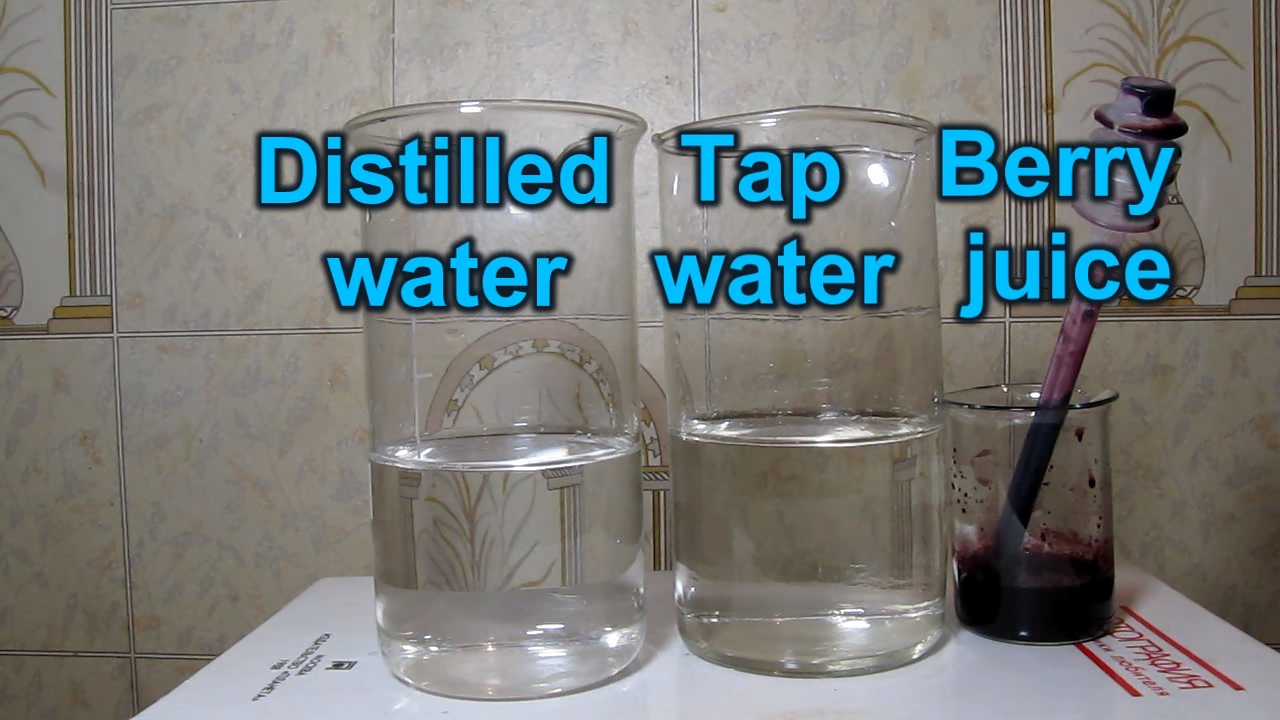
Sambucus ebulus (Danewort), tap water, nitric acid, potassium hydroxide and ammonia |
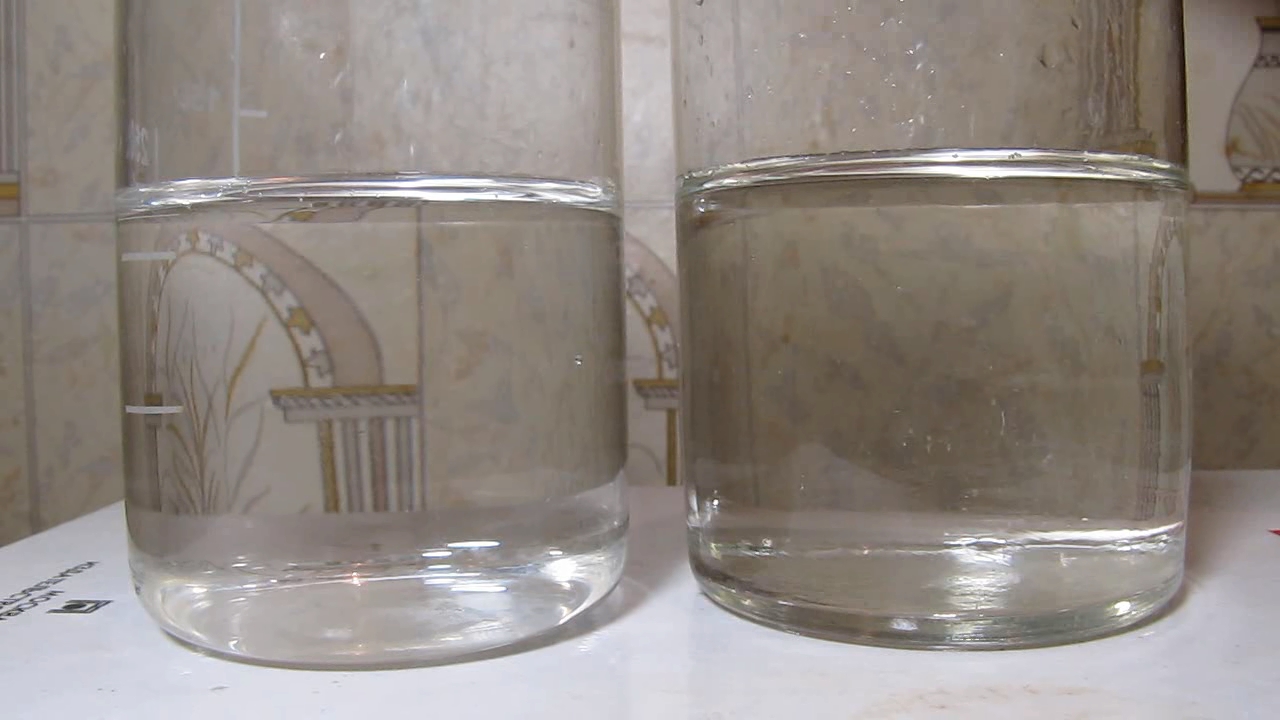
|

|
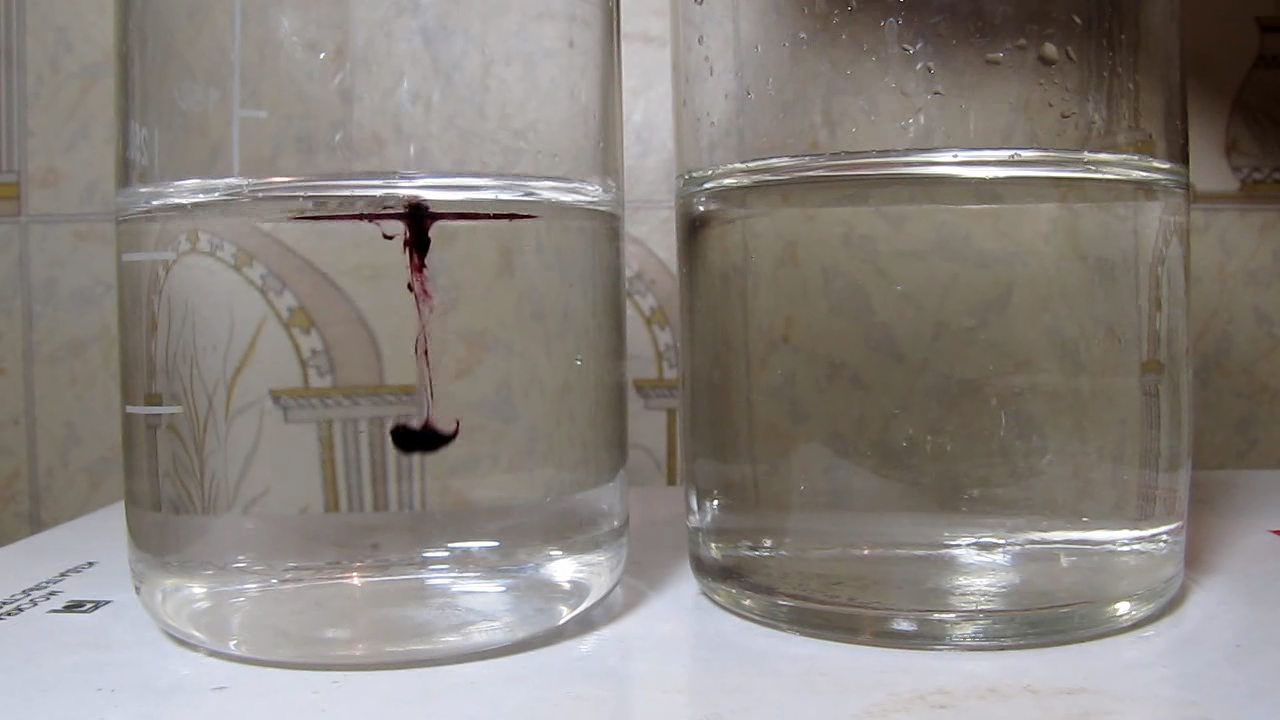
|
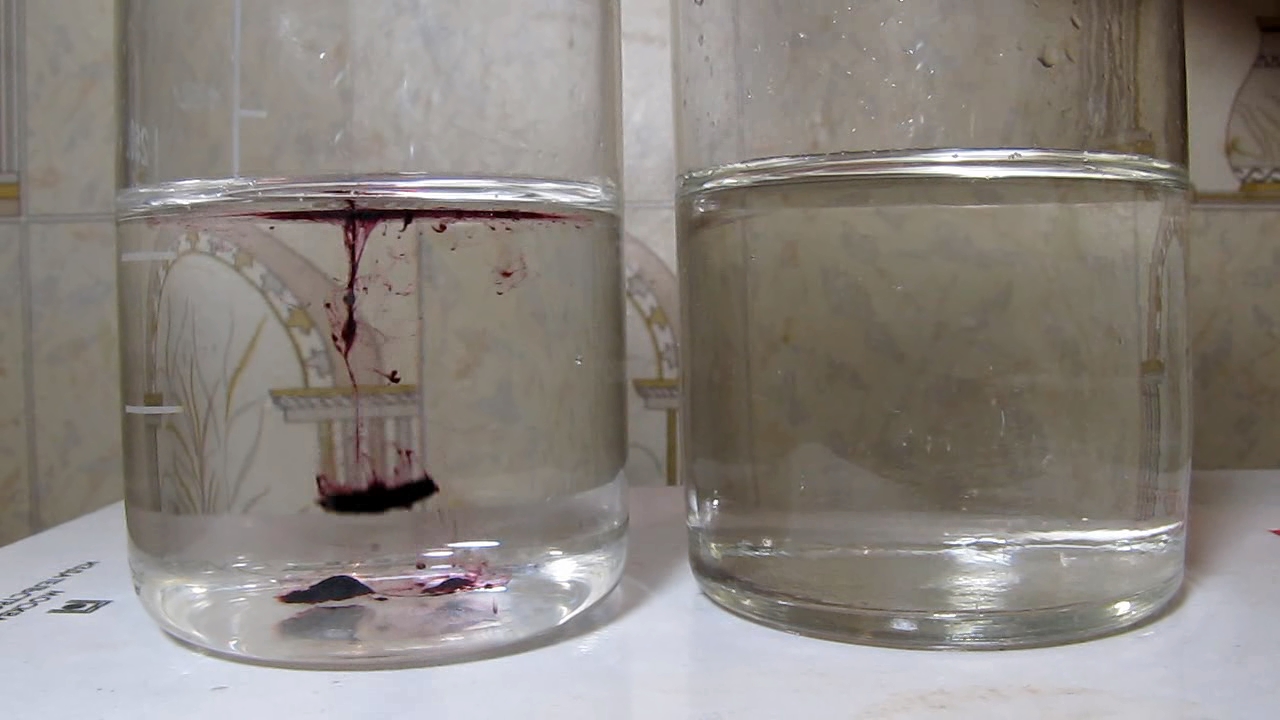
|
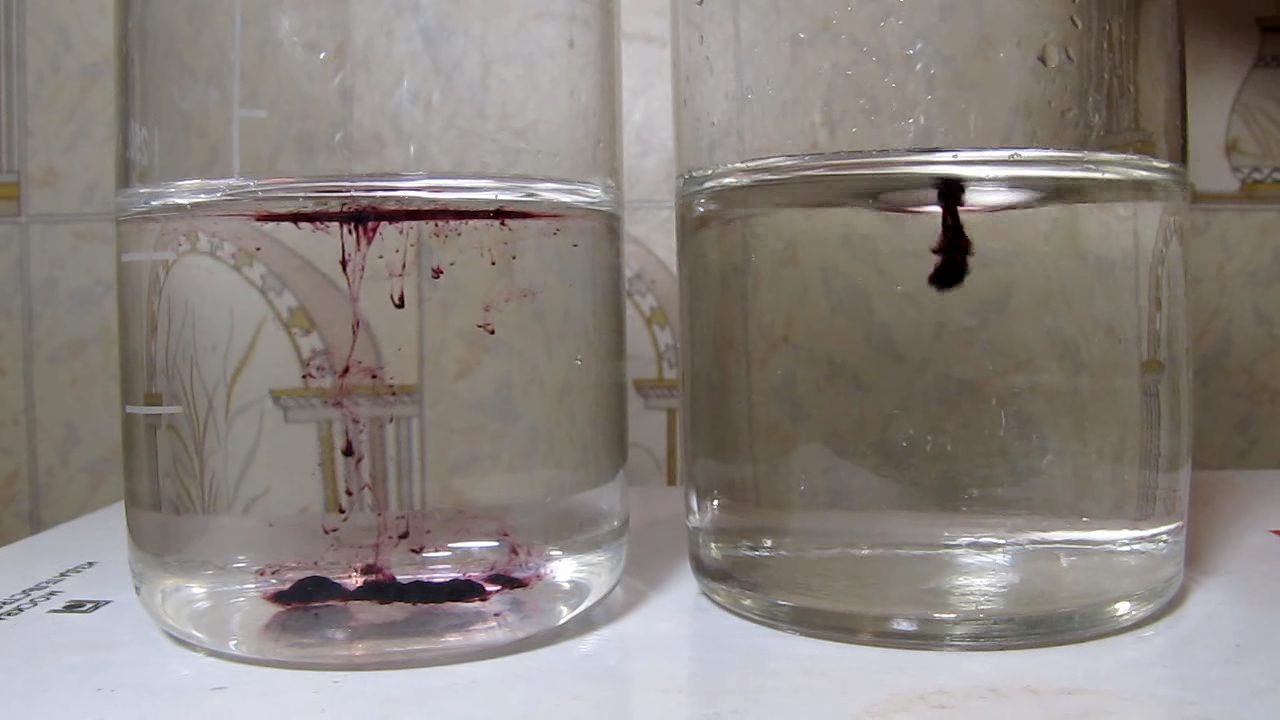
|
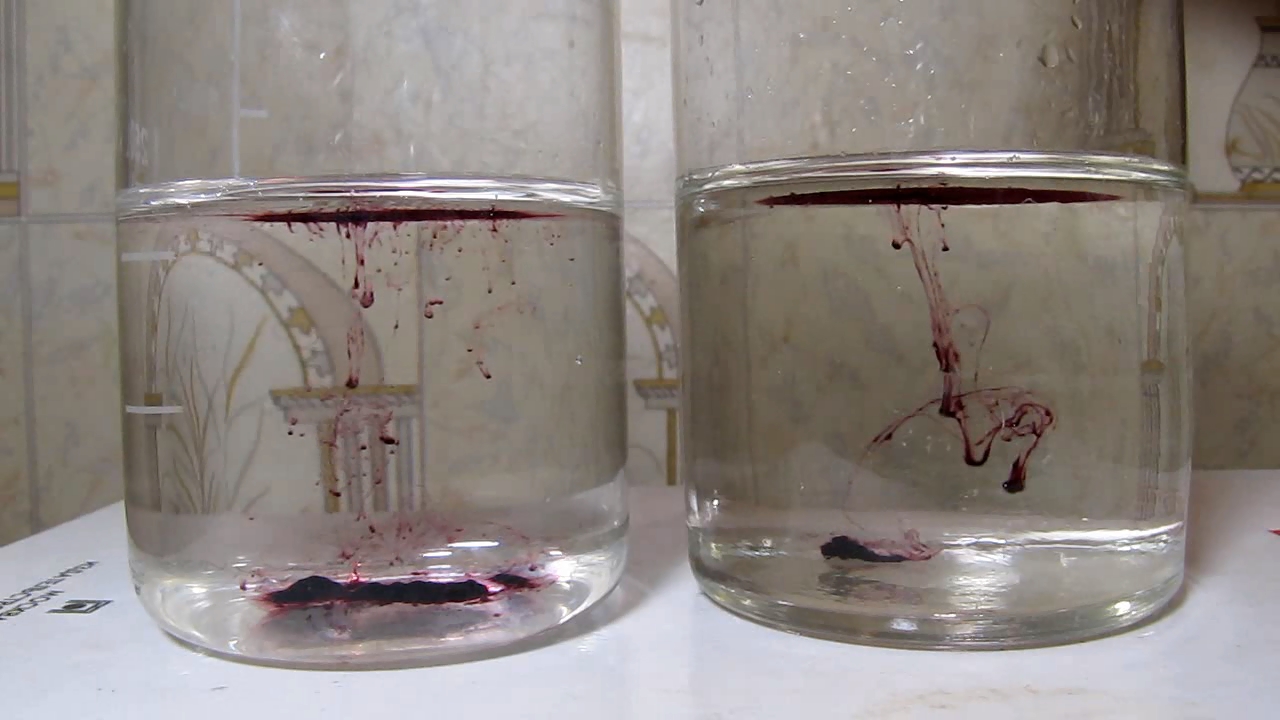
|
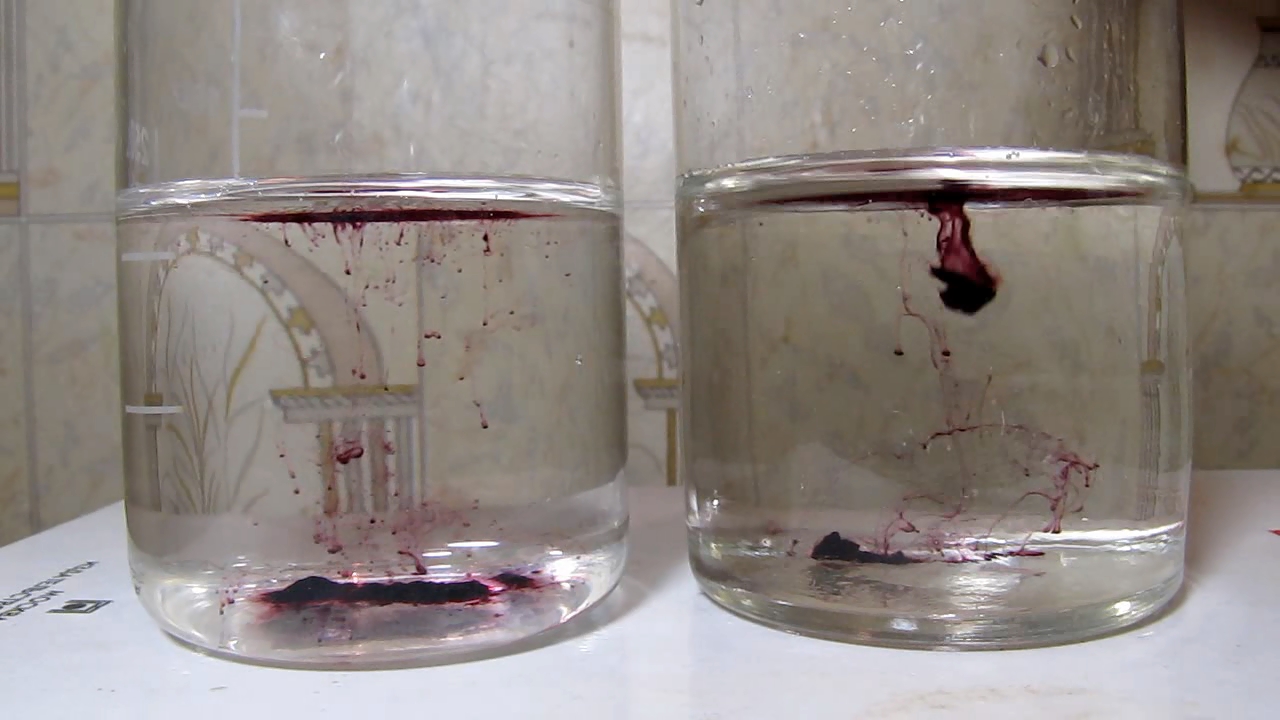
|
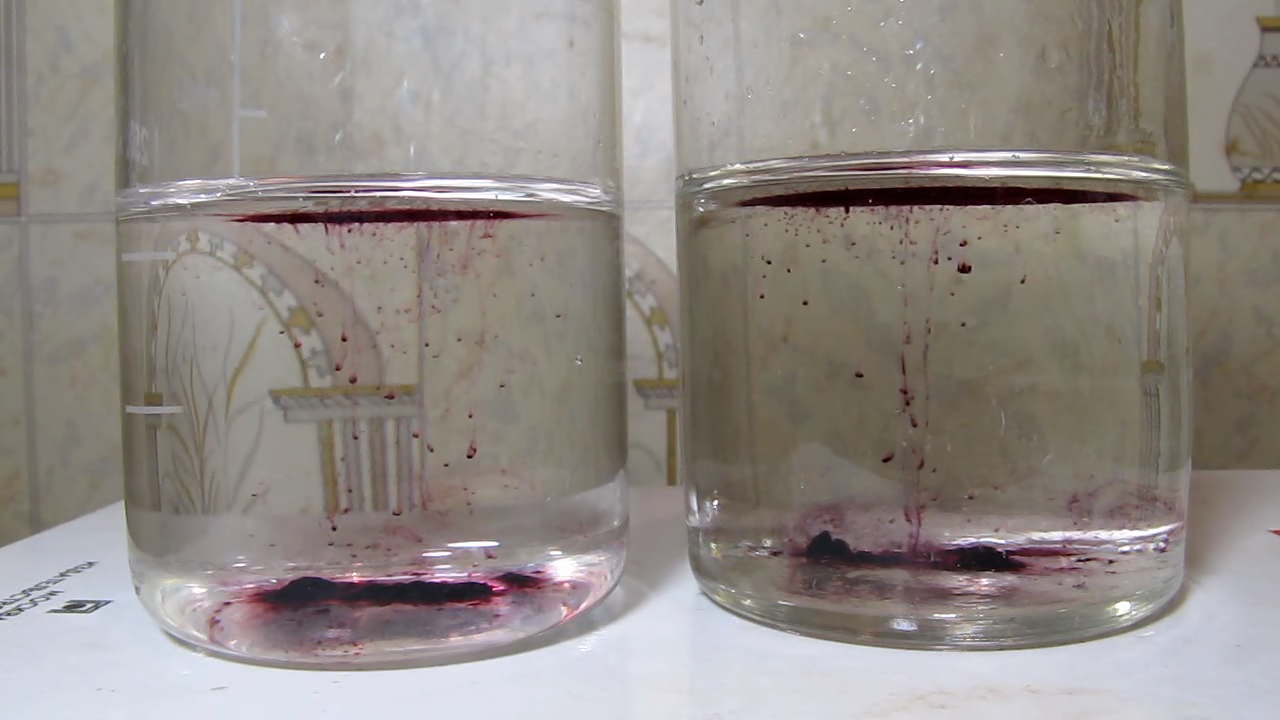
|
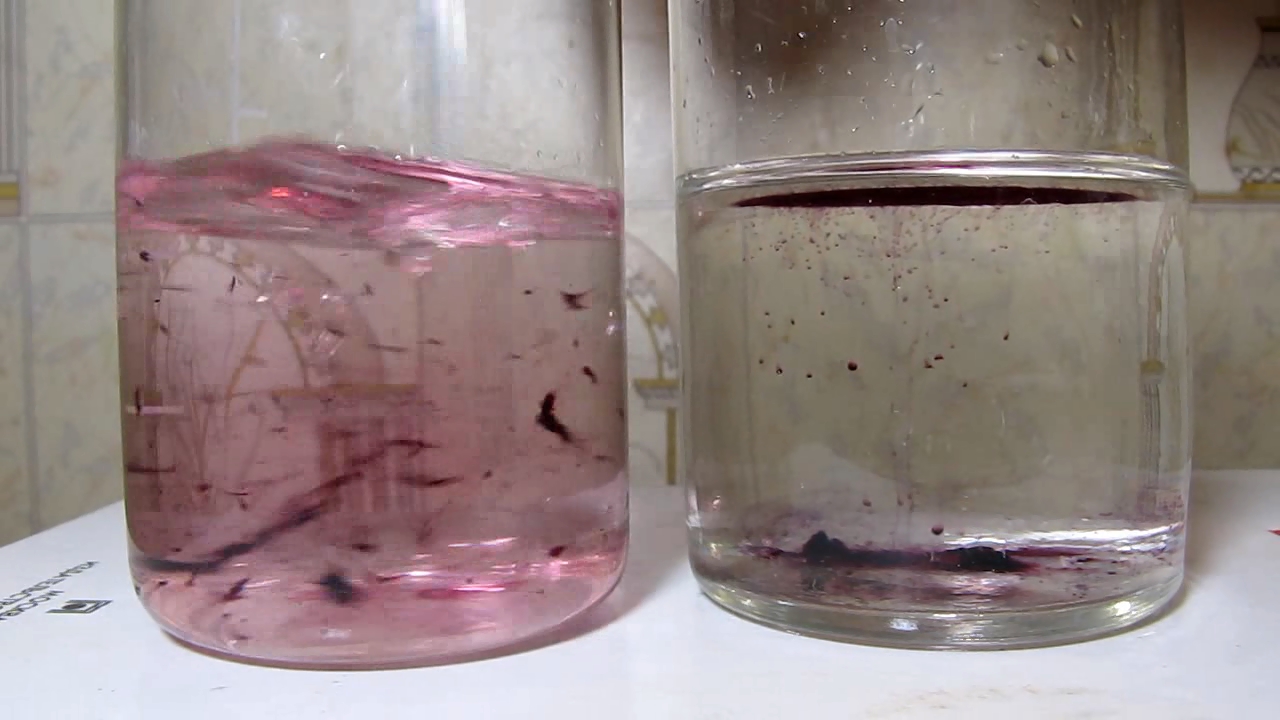
|

|
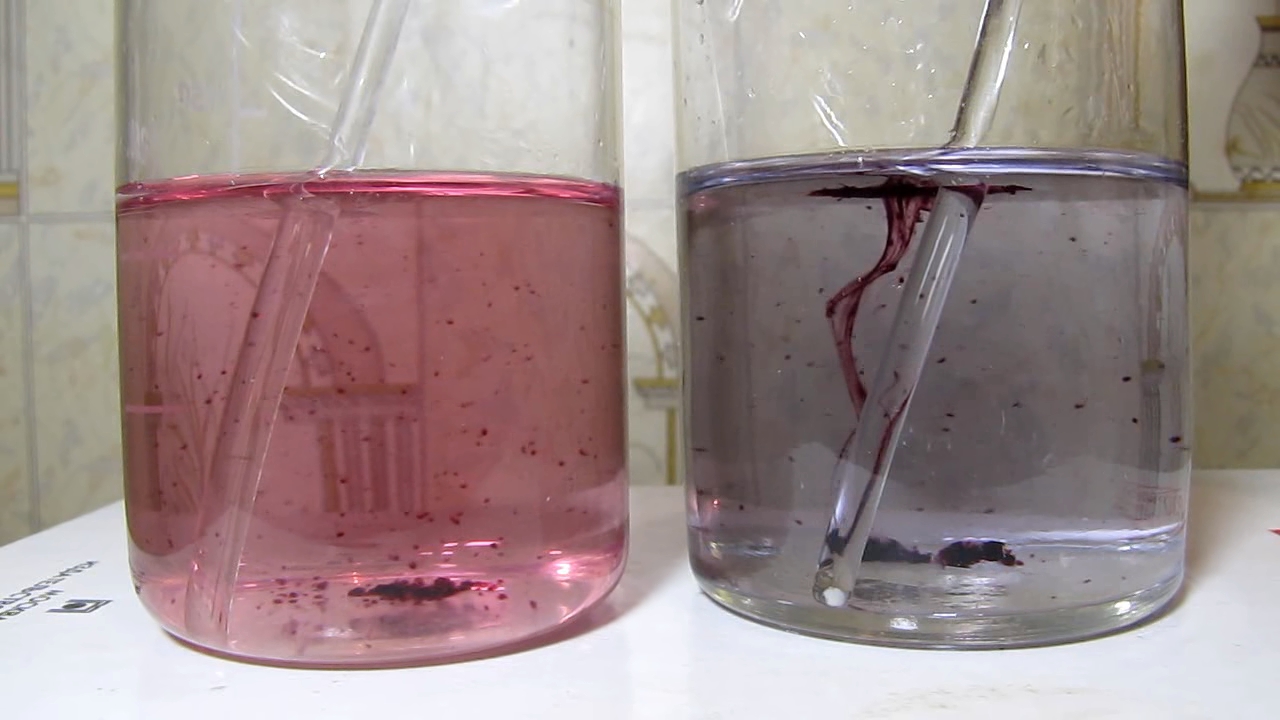
|
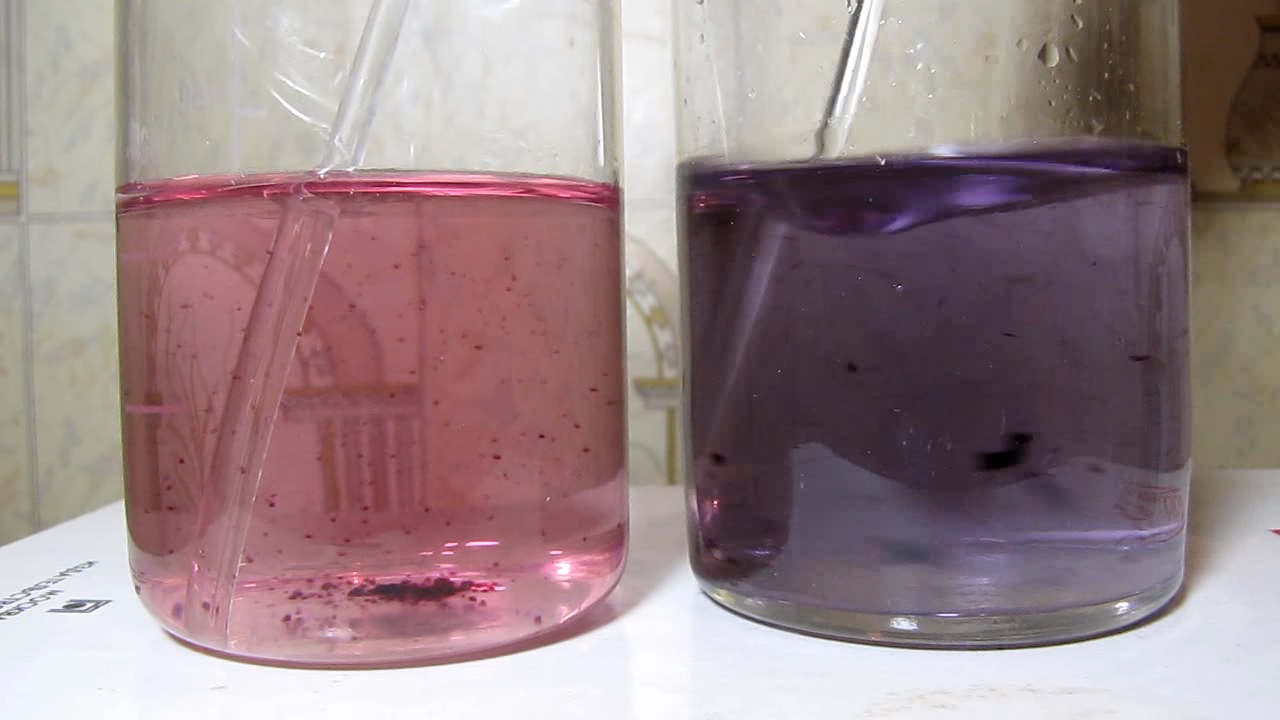
|
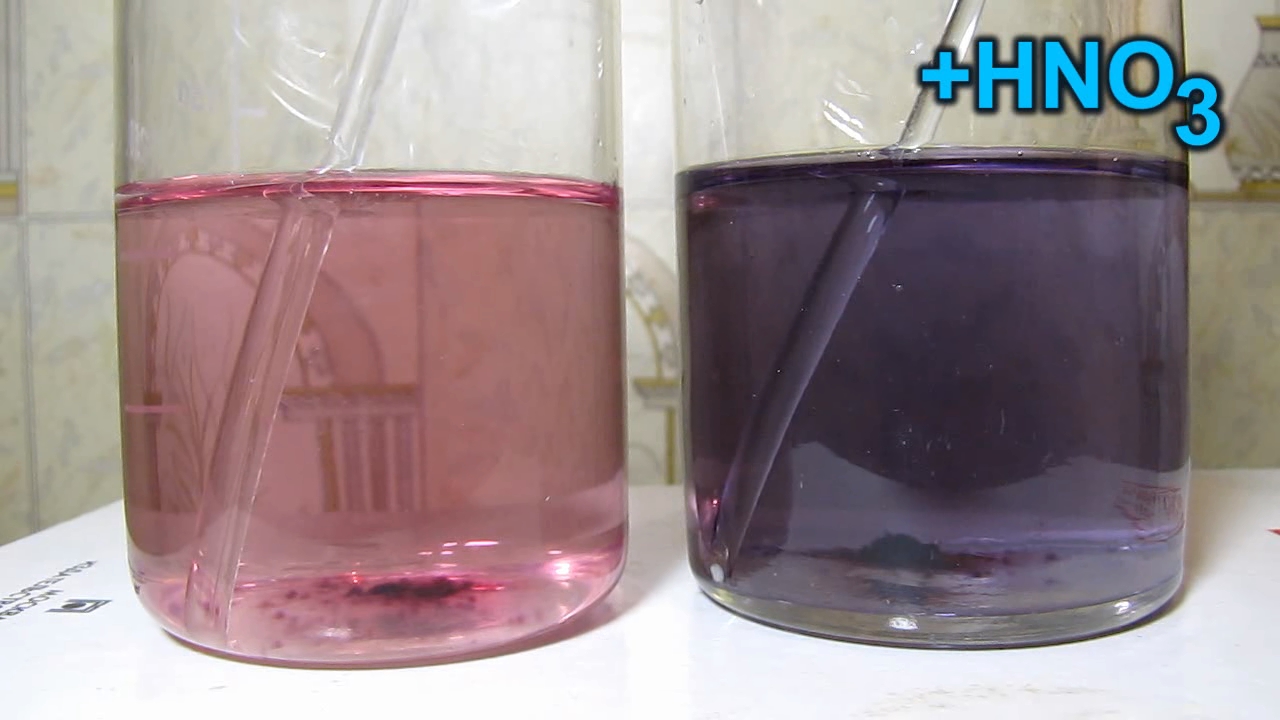
|
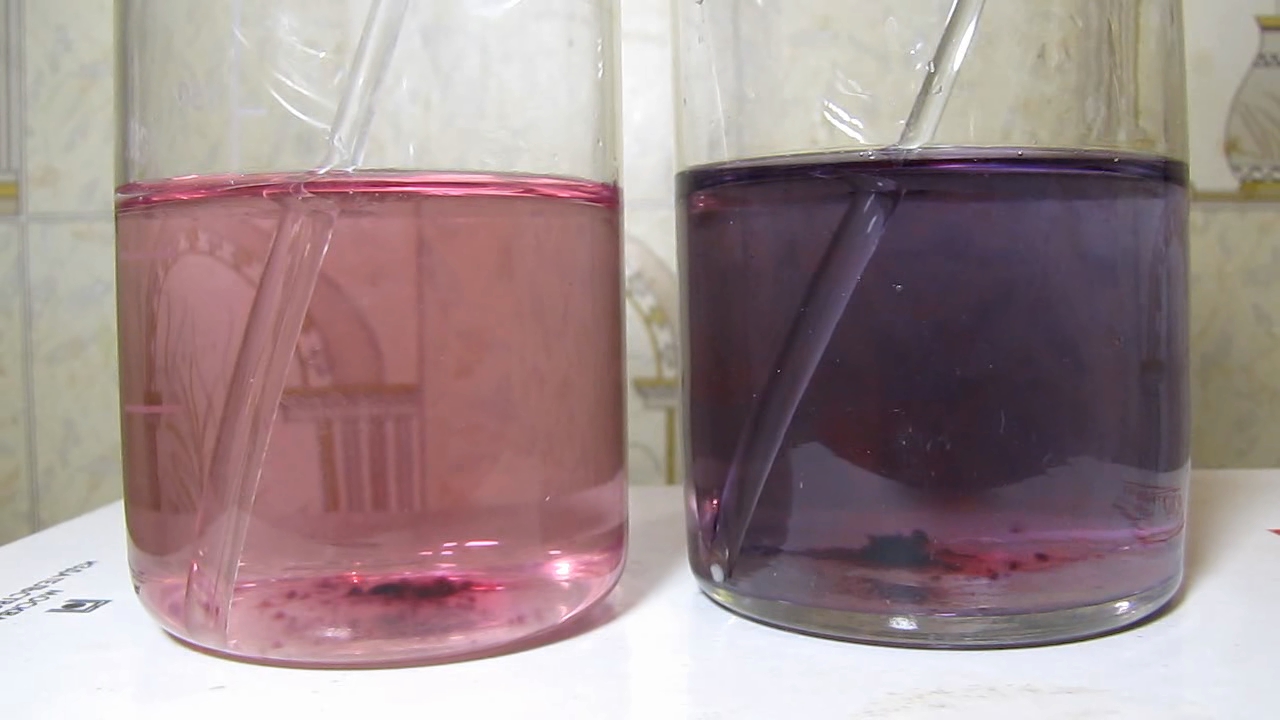
|
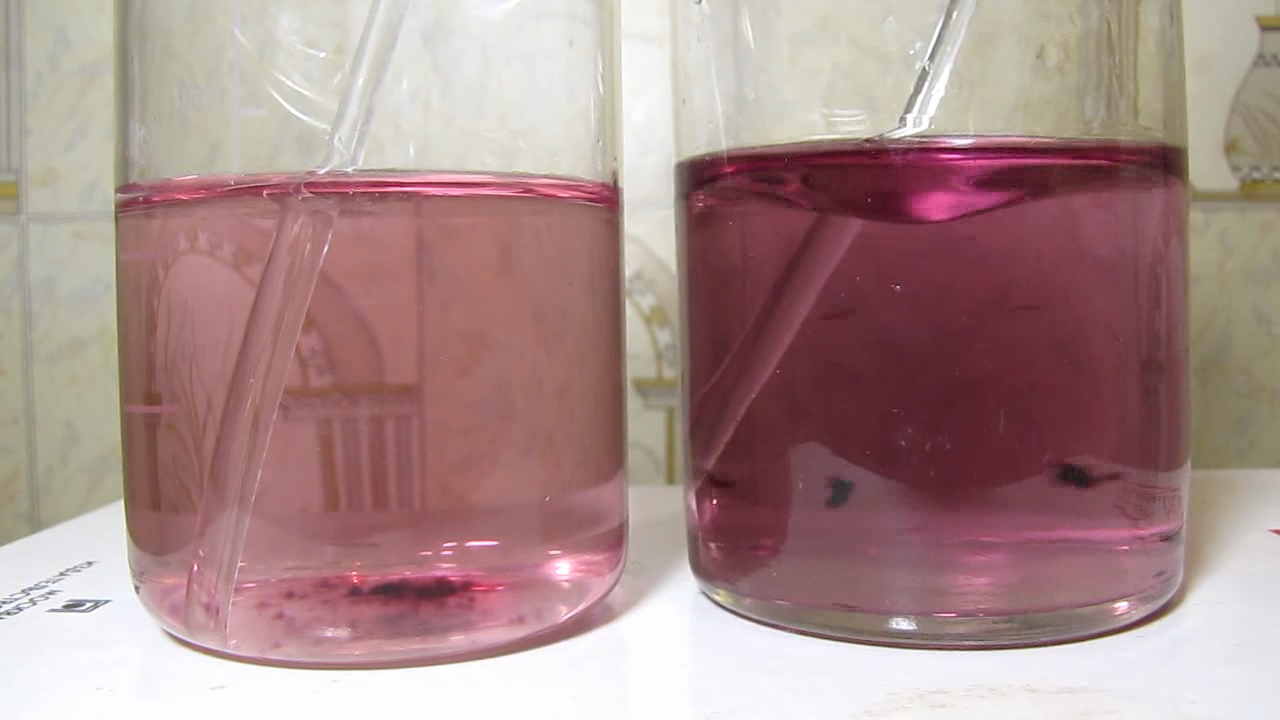
|

|

|
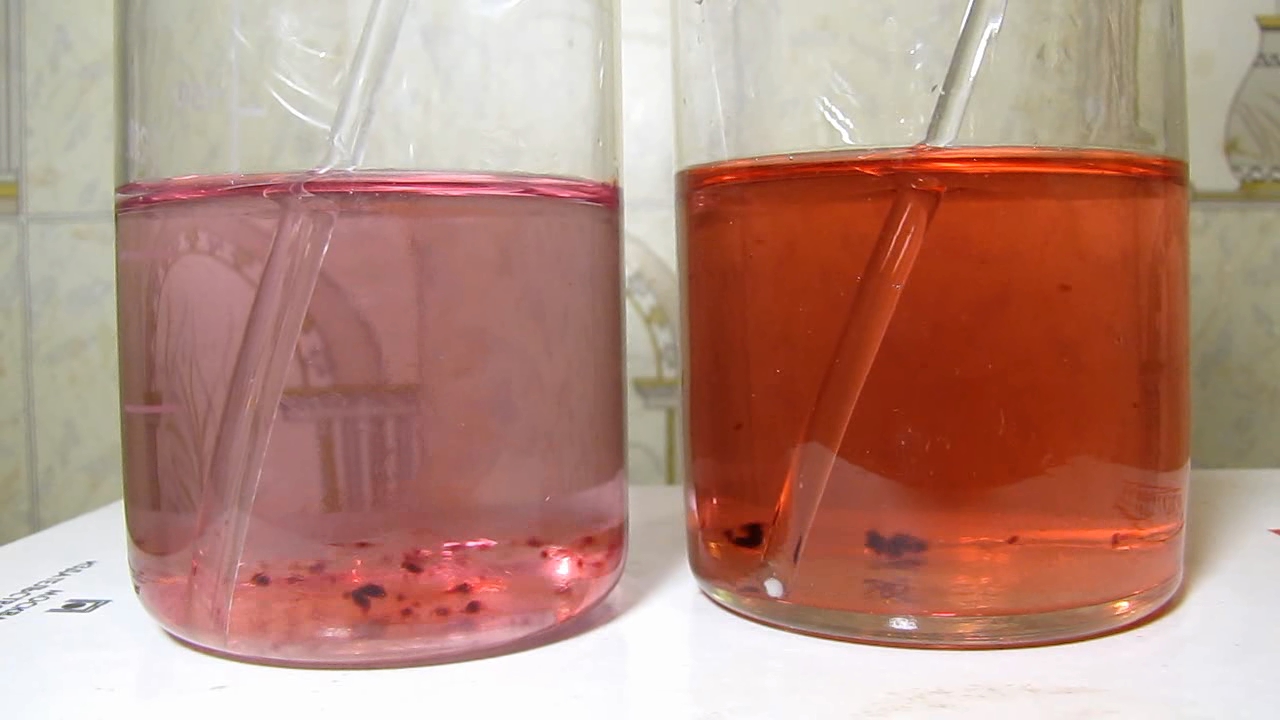
|
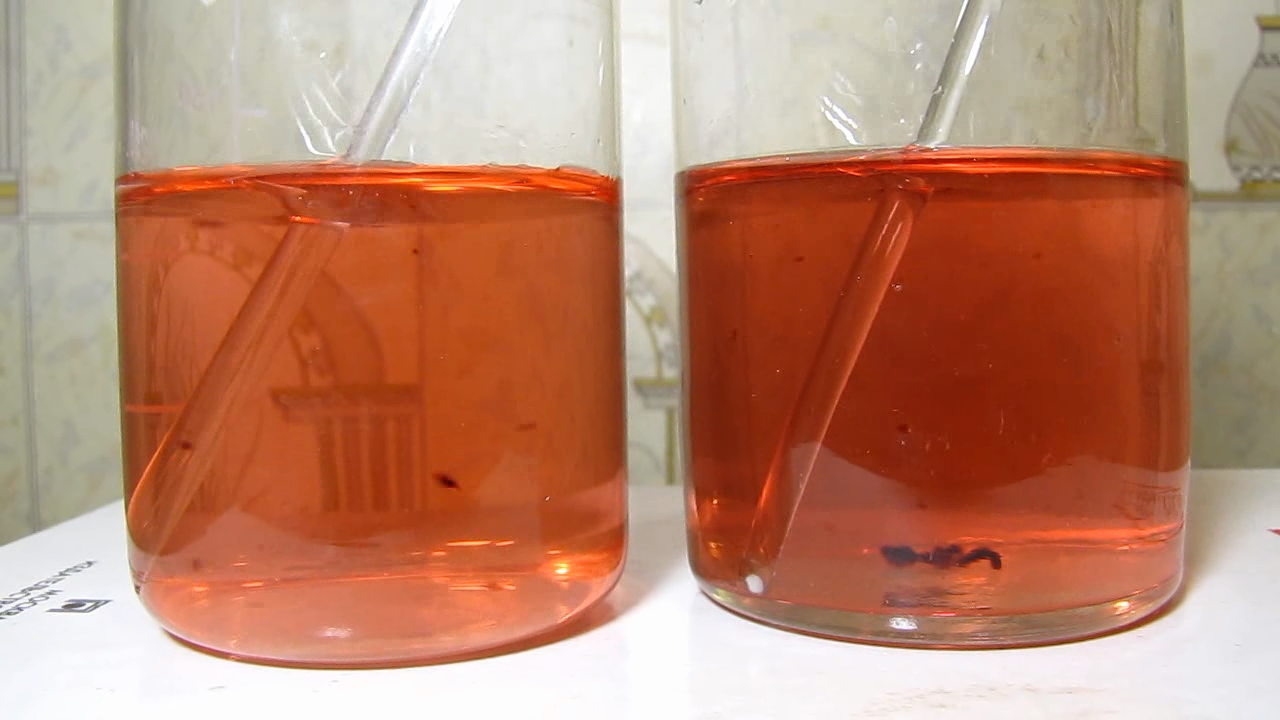
|

|

|

|
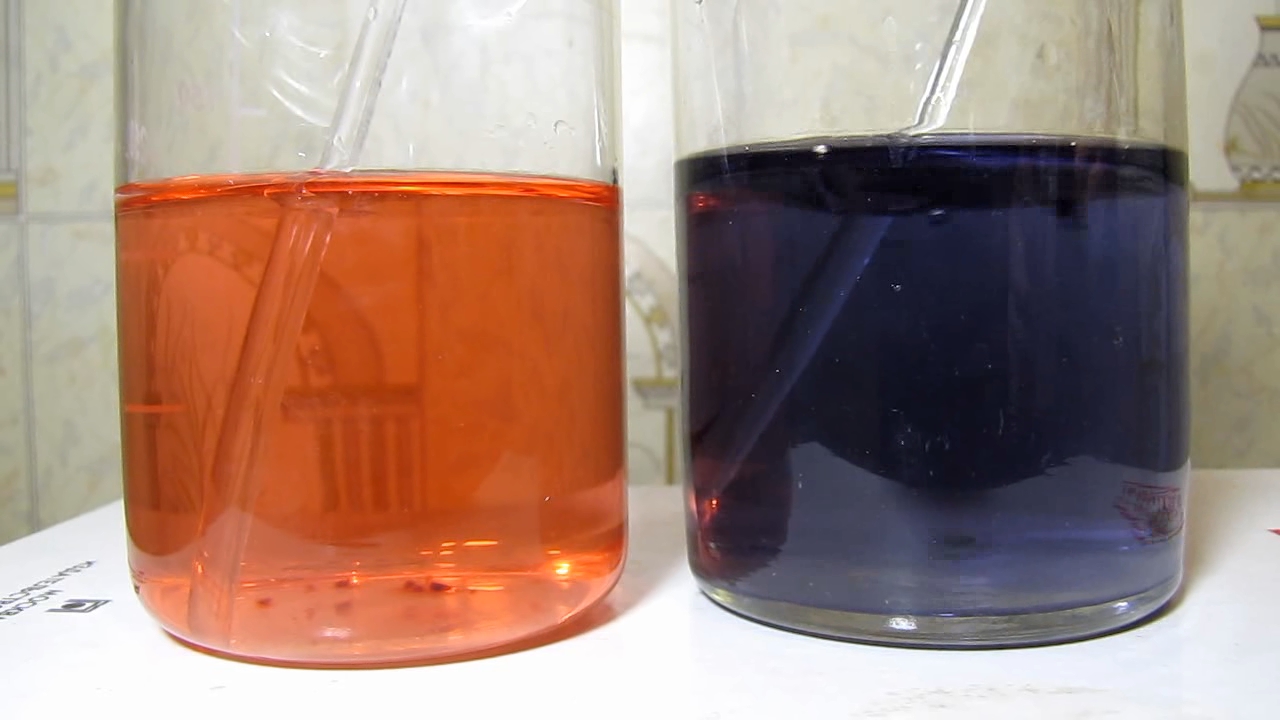
|
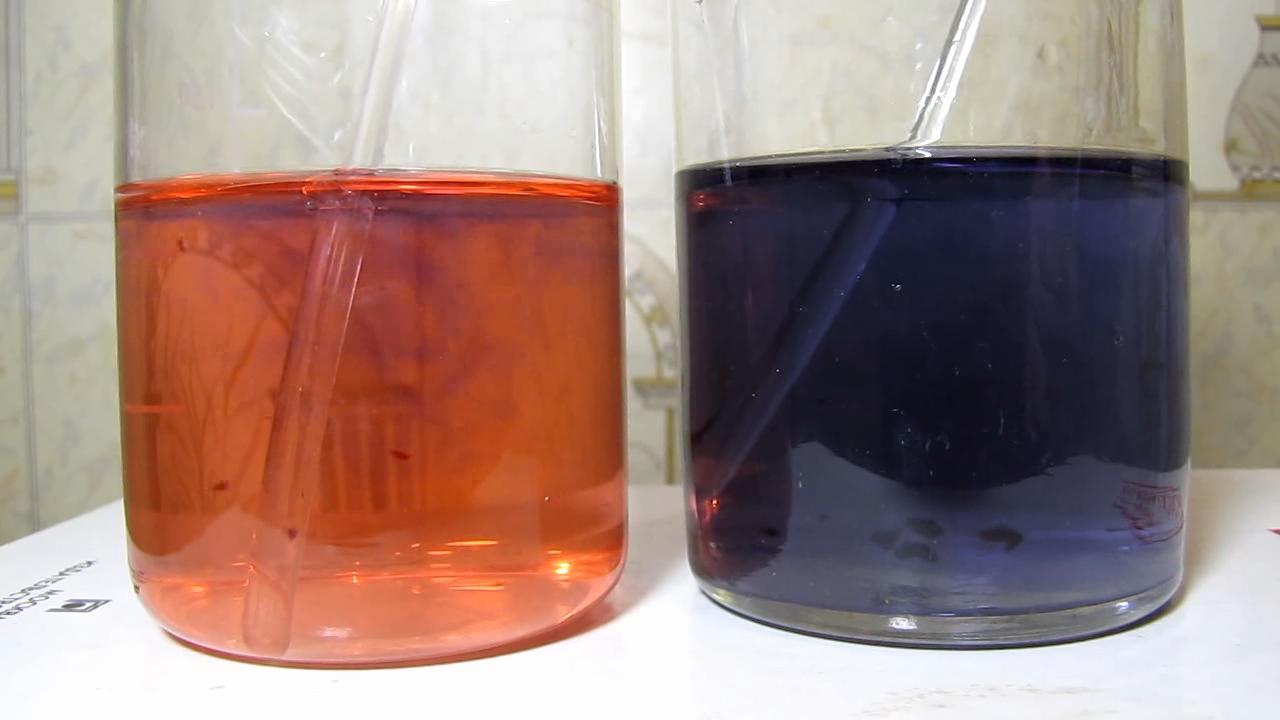
|
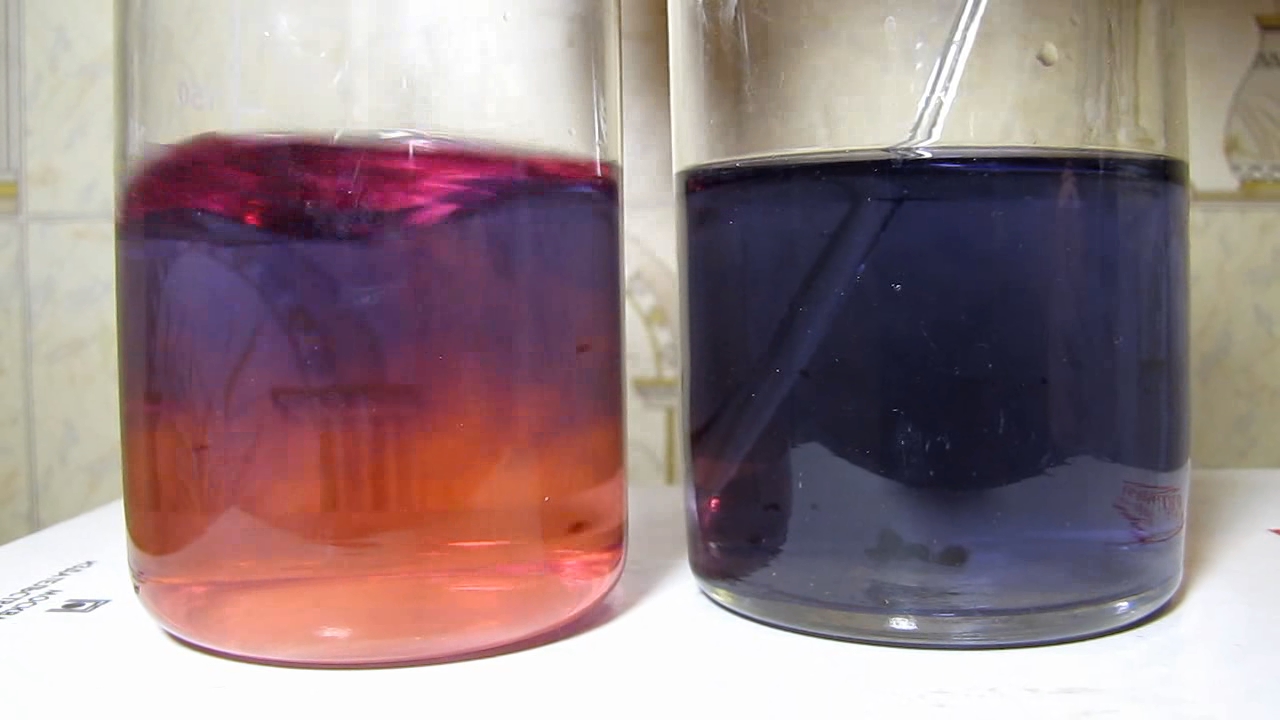
|
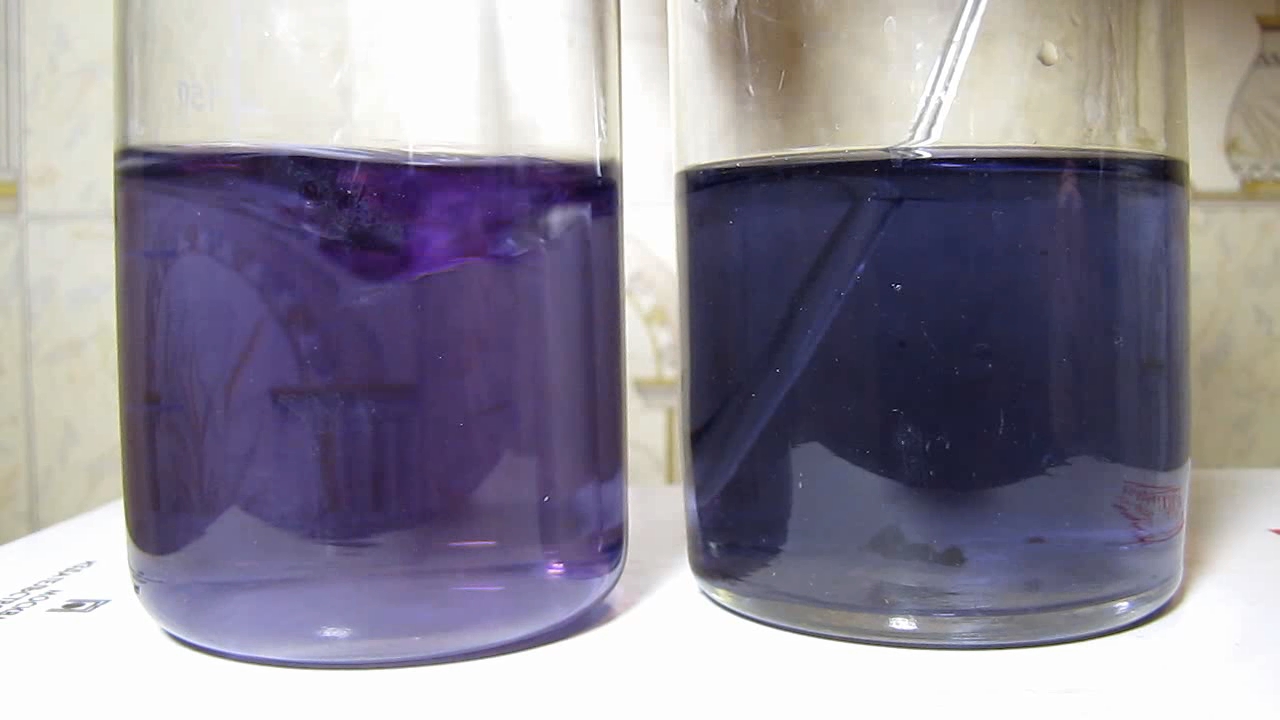
|

|
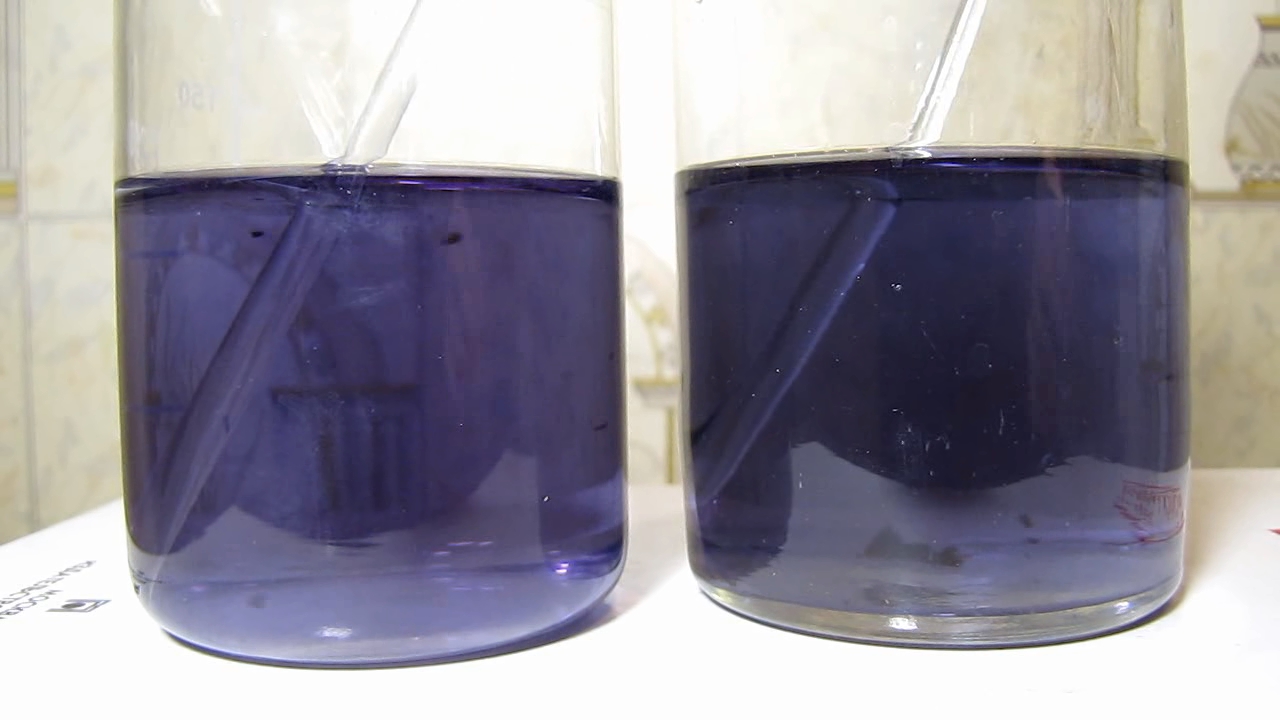
|
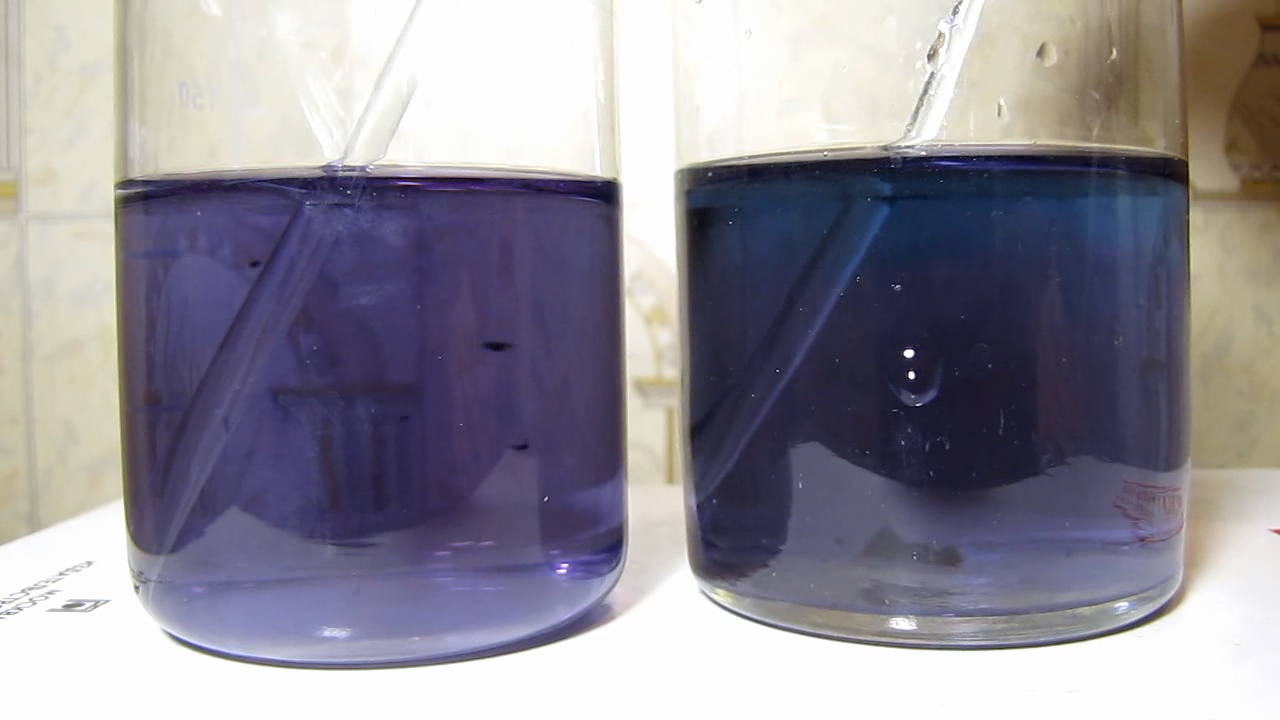
|
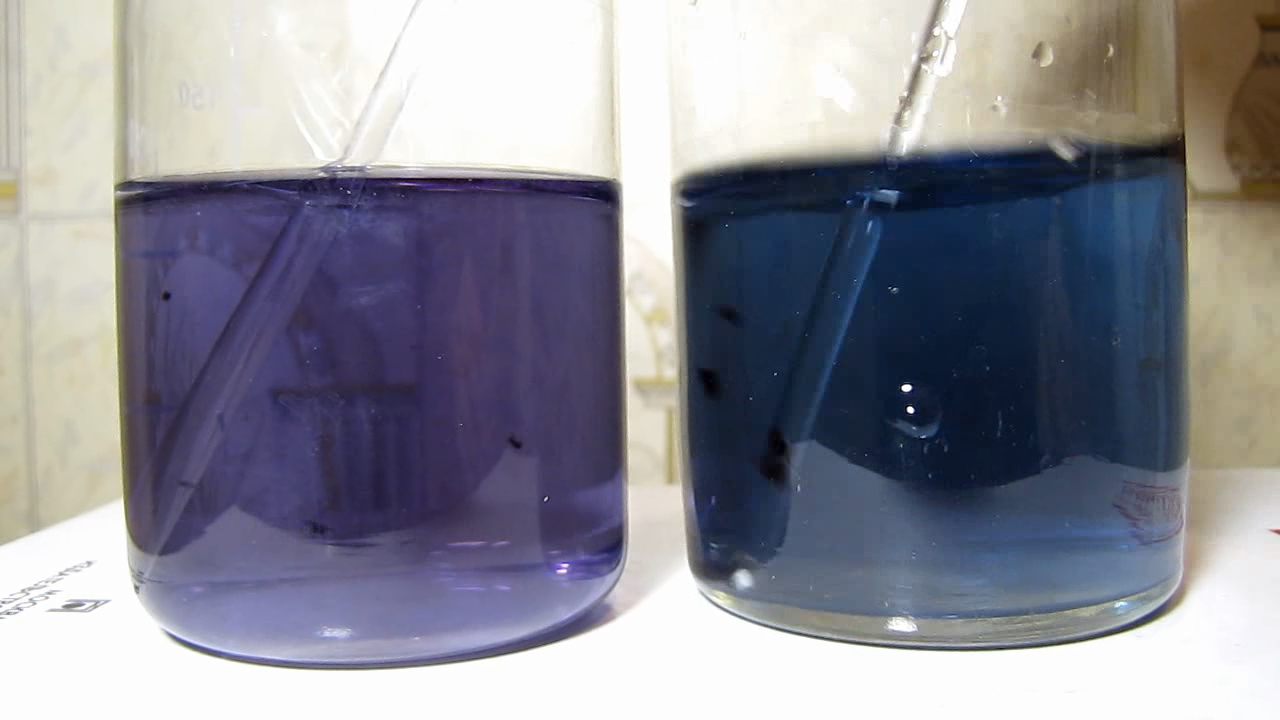
|
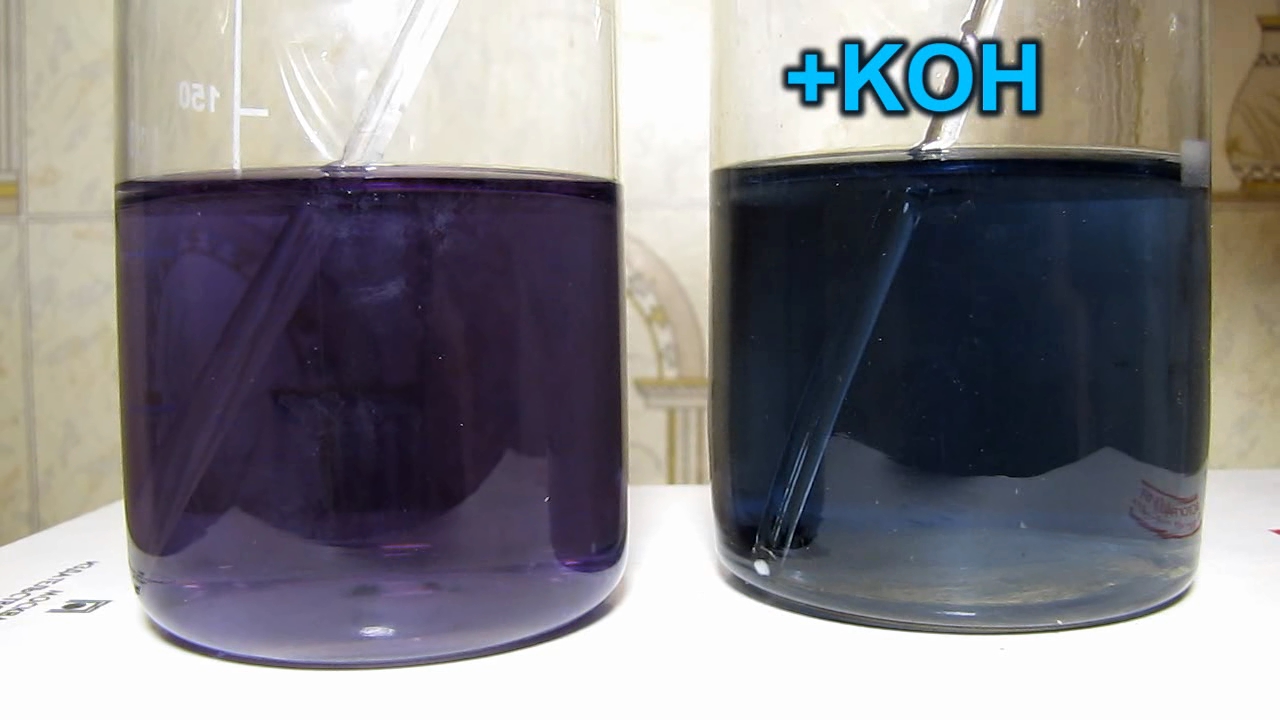
|

|
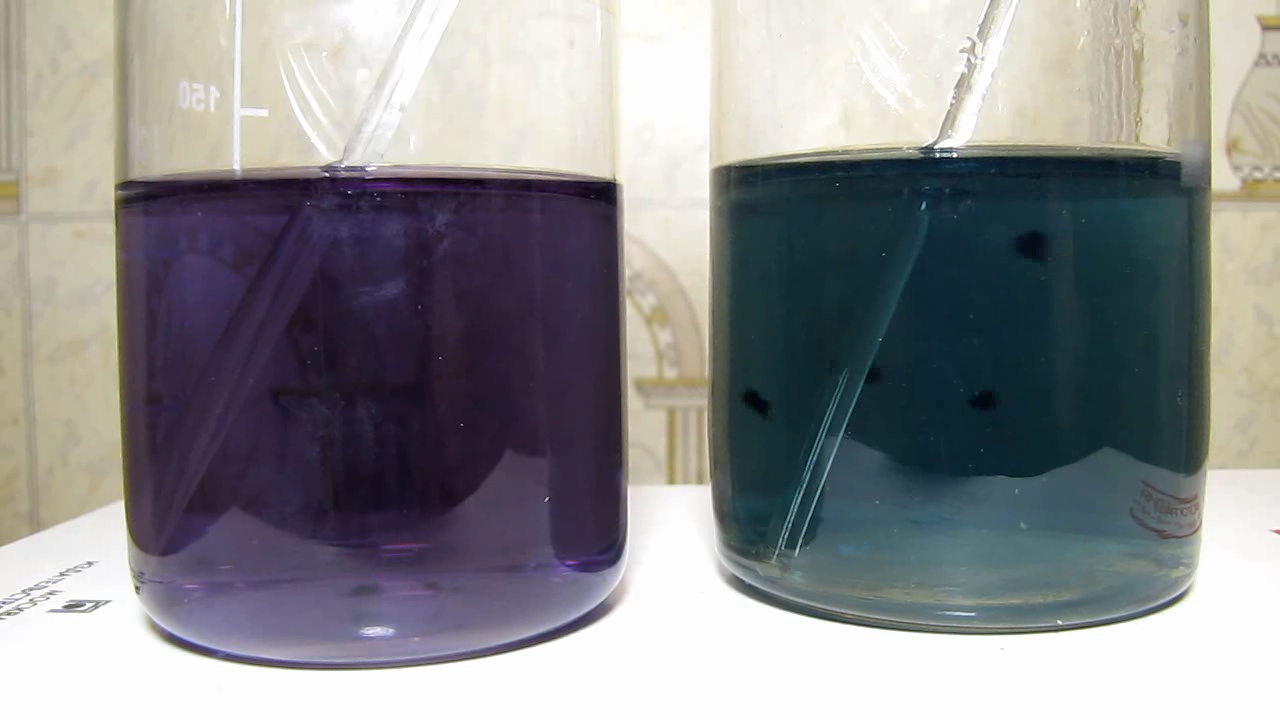
|
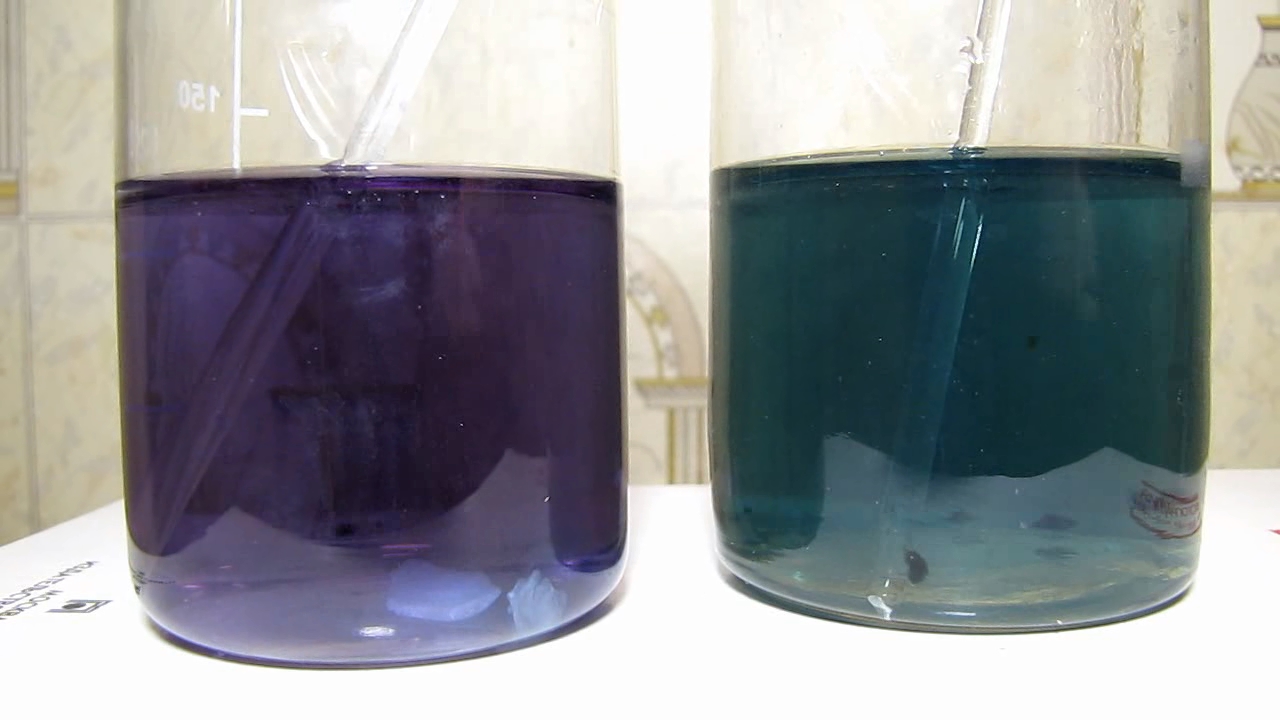
|

|

|

|
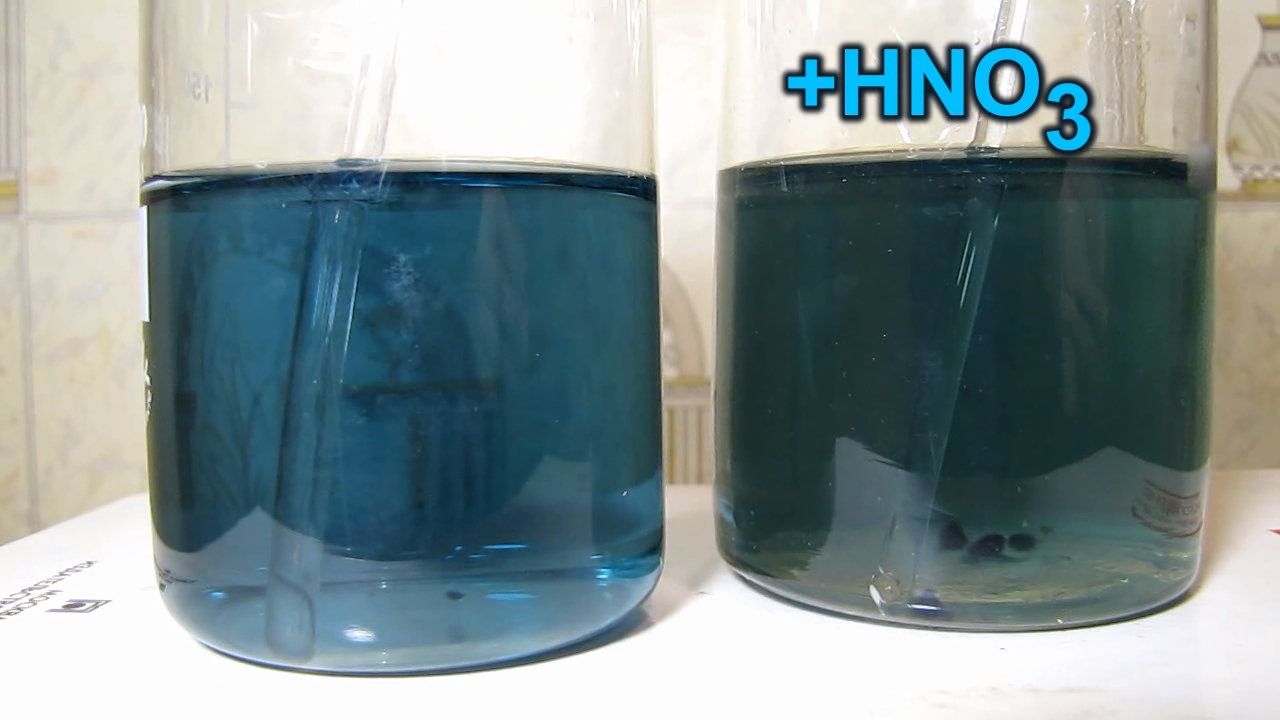
|
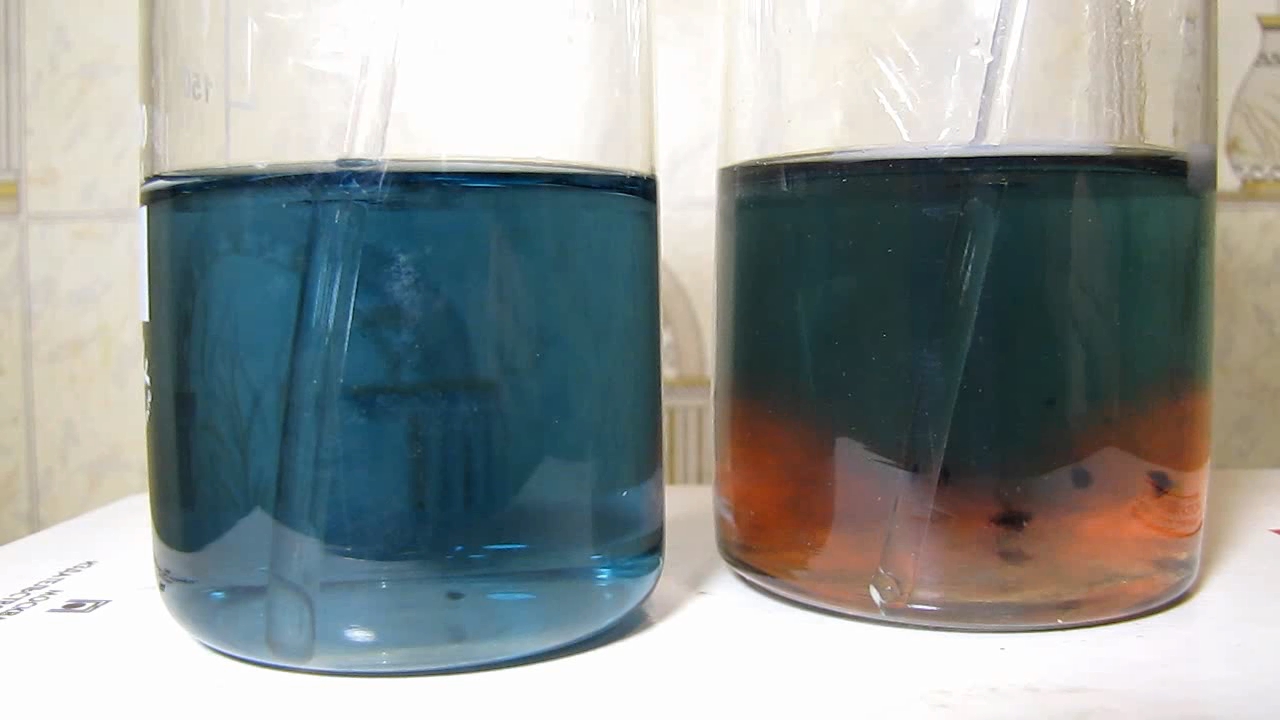
|
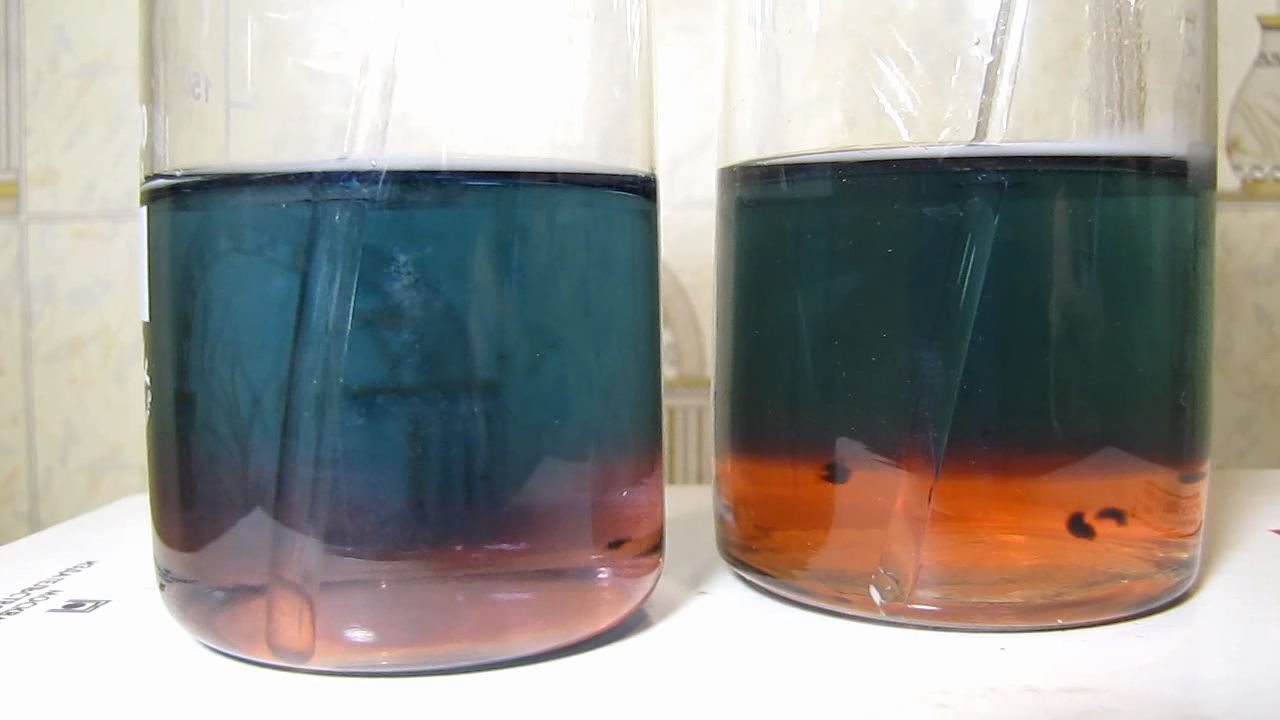
|
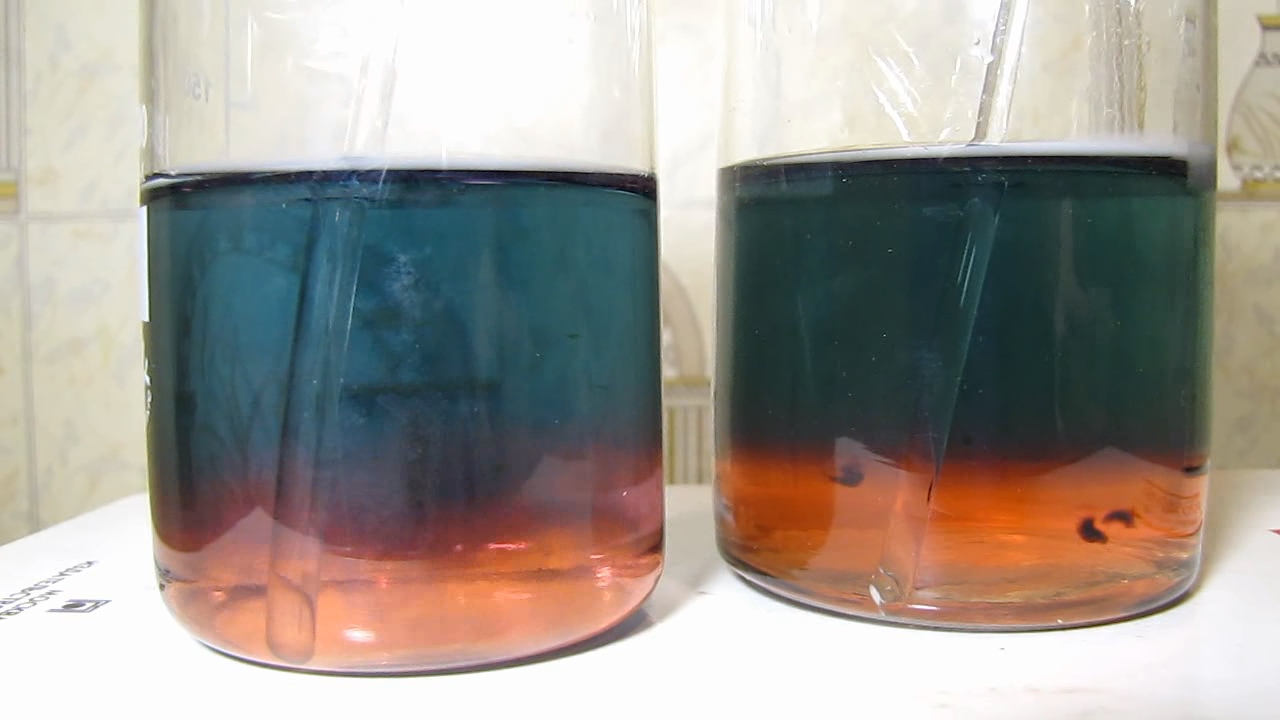
|
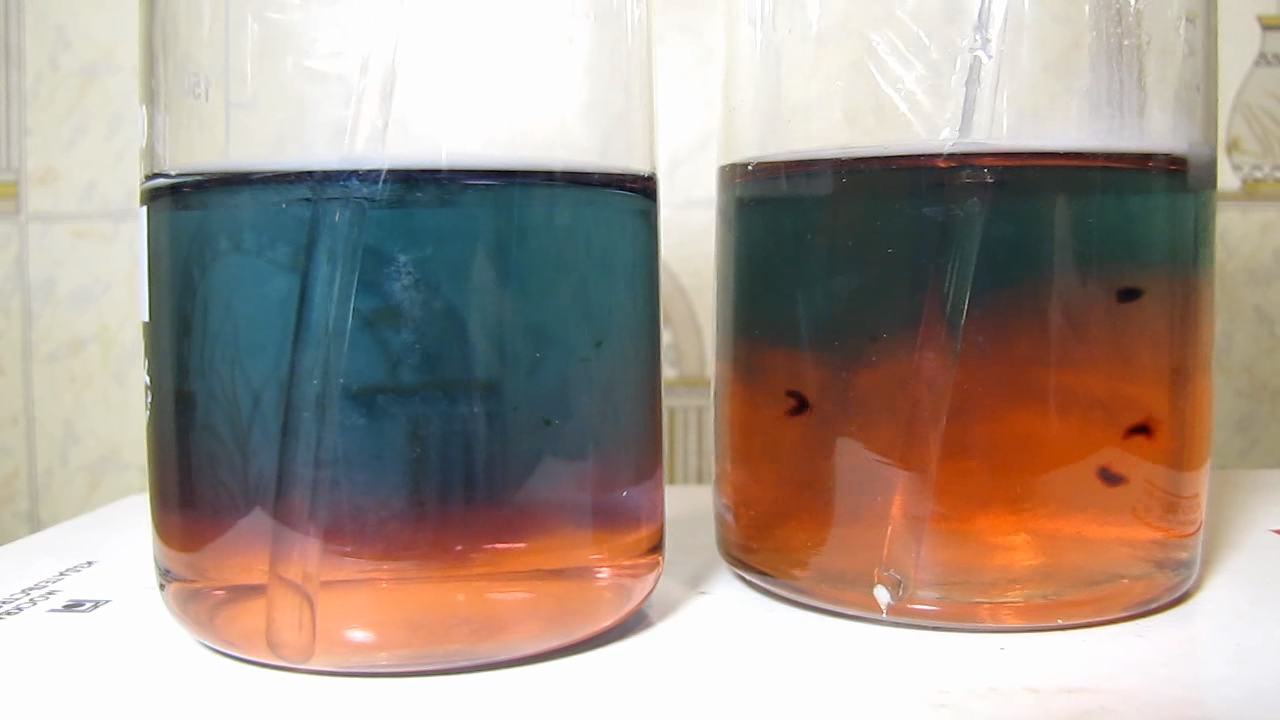
|

|

|
|
Sambucus ebulus (Danewort), potassium hydroxide and hydrogen peroxide - pt.17
Let us return to the case of blueberries and scrambled eggs mentioned in the last part of the article. While this case was discussed, I came across a statement that interested me: "Anthocyanins are pH indicators that show a range of colours from red (acid) through violet (neutral) to green (basic) and even further to yellow (very basic). They're found in fruits, flowers, even red cabbage - which can be used to create your homemade pH indicator solution." The fact is, I observed the green colour of anthocyanins in highly alkaline solutions (in a variety of experiments). Was there a yellow colour? Yes, it was. Yellow colouration of anthocyanins in alkaline medium appeared frequently, but I believe that the yellow colour results from the oxidation of polyphenols in alkaline medium by atmospheric oxygen. Anthocyanins are typical representatives of polyphenols, so they are oxidized in alkaline solutions as easily as other polyphenols. Hydroquinone and pyrogallol are well-known examples. Microbiologists use an alkaline pyrogallol solution to create anaerobic conditions (this is necessary to cultivate anaerobic microorganisms). Thus, the yellow colour of anthocyanins in an alkaline medium is not the result of an acid-base interaction but caused by oxidation-reduction reactions. The proof is the irreversibility of the colour transition (adding acid to yellowed anthocyanins will not return their original colour). The experiments with red onions are a good illustration: Red onion, ammonia, nitric acid and acetic acid [Link]. I still had juice from danewort berries (Sambucus ebulus), so I decided to test how its pigment behaves at a high alkali concentration. Moreover, I did not intend to add an alkali to the berry juice (diluted with water) but to do the opposite. I decided to add a drop of the juice to a highly alkaline solution. I dissolved 3 g of potassium hydroxide in 15 ml of distilled water, then added one drop of danewort juice. The pigment immediately turned green. I stirred the solution. In the first seconds, the colour of the solution was pure green, but soon, a yellow tint appeared, which gradually intensified over time. The colour change was difficult to notice if you observed the solution directly. The green solution became yellowish-green, and the yellow tint progressively strengthened over time. However, the process is clearly visible when watching the experiment video. I did not wait until the oxidation reaction was completed and the solution turned yellow. I added a little 30% hydrogen peroxide solution to speed up the process and stirred the liquid. The solution instantly turned yellow (without a green tint). Hydrogen peroxide oxidized the green pigment much faster than atmospheric oxygen. |
|
Sambucus ebulus (Бузина травянистая), гидроксид калия и перекись водорода - ч.17
Вернемся к упомянутому в прошлой части статьи случаю с ягодами черники и омлетом. Во время обсуждения этого случая встретил утверждение, которое меня очень заинтересовало: "Антоцианы - это индикаторы pH, которые меняют цвет в широком диапазоне: от красного (кислая среда) и фиолетового (нейтральная) до зеленого (щелочная) и даже желтого (сильнощелочная среда). Антоцианы содержатся во фруктах, цветах и даже в красной капусте, которую вы можете использовать для создания раствора кислотно-основного индикатора в домашних условиях". Дело в том, что в сильнощелочной среде я наблюдал зеленую окраску антоцианов (в самых разных экспериментах). А была ли желтая окраска? Да, была. Желтая окраска антоцианов в щелочной среде появлялась часто, однако я считаю, что желтый цвет является результатом окисления полифенолов в щелочной среде кислородом воздуха. Антоцианы - типичные представители класса полифенолов, поэтому они окисляются в щелочной среде так же легко, как и другие полифенолы. Известные примеры: гидрохинон и пирогаллол. Щелочной раствор пирогаллола используют микробиологи для создания анаэробных условий (это необходимо для культивирования анаэробных микроорганизмов). Т.е., желтый цвет антоцианов в щелочной среде является не результатом кислотно-основного взаимодействия, а результатом окислительно-восстановительных реакций. Доказательство - необратимость перехода цвета (добавление кислоты к пожелтевшим антоцианам не вернет их исходную окраску). Иллюстрацией могут послужить эксперименты с красным луком: Red onion, ammonia, nitric acid and acetic acid [Link]. У меня остался сок ягод Sambucus ebulus (Бузина травянистая, Danewort), поэтому я решил проверить, как ведет его пигмент при высокой концентрации щелочи. Причем добавить не щелочь к разбавленному водой соку ягод, а сделать наоборот: добавить каплю сока к крепкому раствору щелочи. В 15 мл дистиллированной воды растворил 3 г едкого кали. Добавил 1 каплю сока бузины. Пигмент сразу же стал зеленым. Перемешал раствор. В первые секунды цвет раствор был чисто-зеленым, но вскоре появился желтый оттенок, который постепенно усиливался во времени. Если наблюдать за раствором непосредственно, изменение цвета заметить трудно. Зеленый раствор становится желтовато-зеленым и желтый оттенок постепенно усиливается в времени. Но при просмотре видео эксперимента процесс хорошо заметен. Я не стал дожидаться, пока реакция окисления закончится, и раствор станет желтым. Чтобы ускорить процесс, добавил немного 30% раствора перекиси водорода, перемешал. Раствор моментально стал желтым (без зеленого оттенка). Перекись водорода окислила зеленый пигмент значительно быстрее, чем кислород воздуха. |
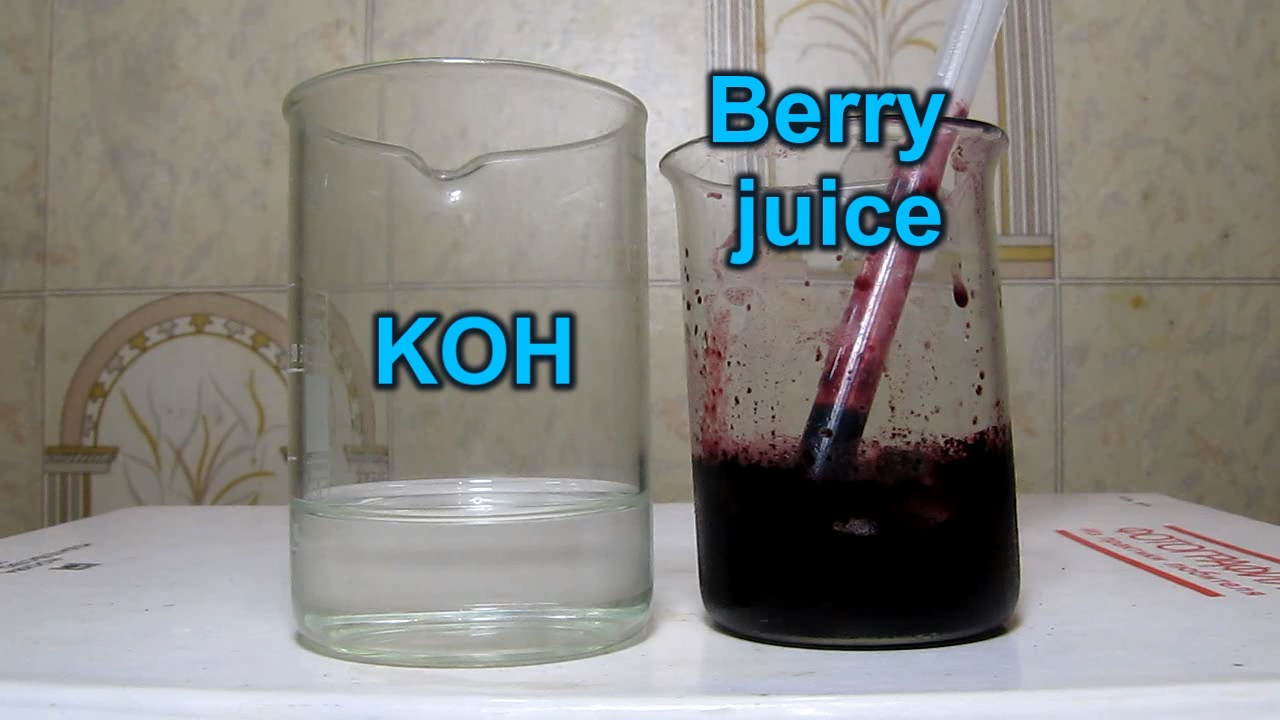
Sambucus ebulus (Danewort), potassium hydroxide and hydrogen peroxide |

|

|
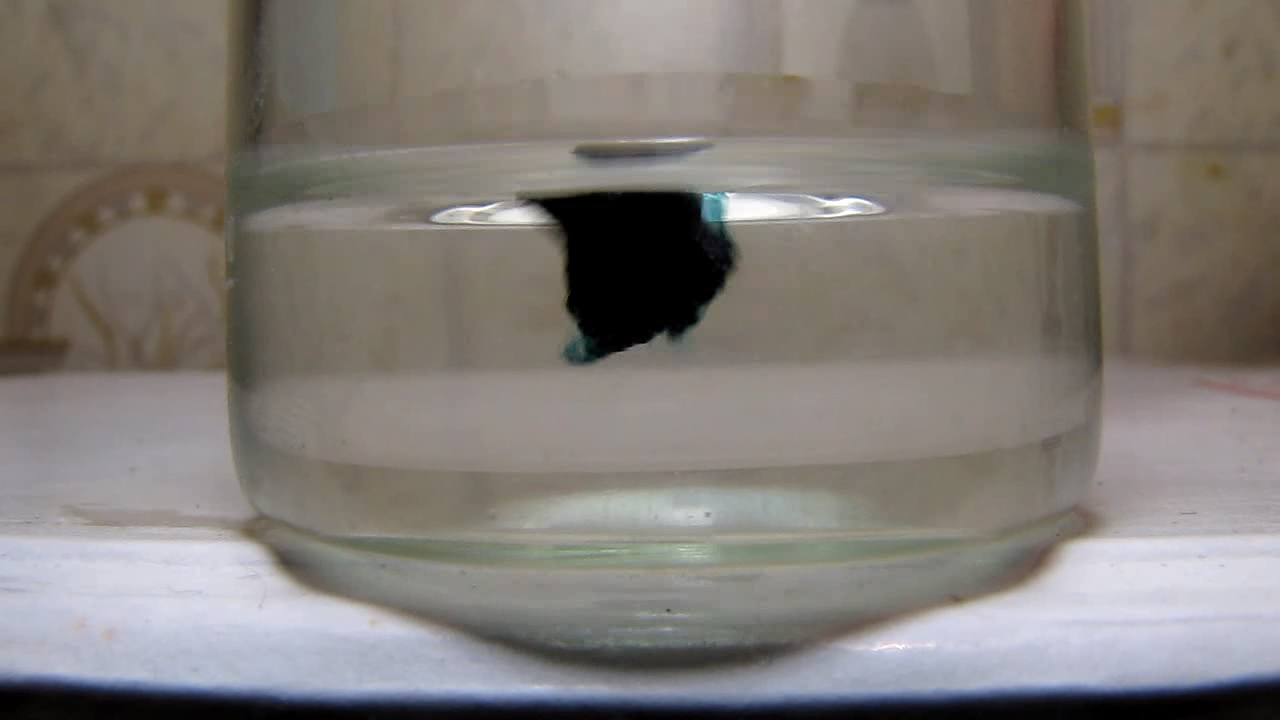
|

|
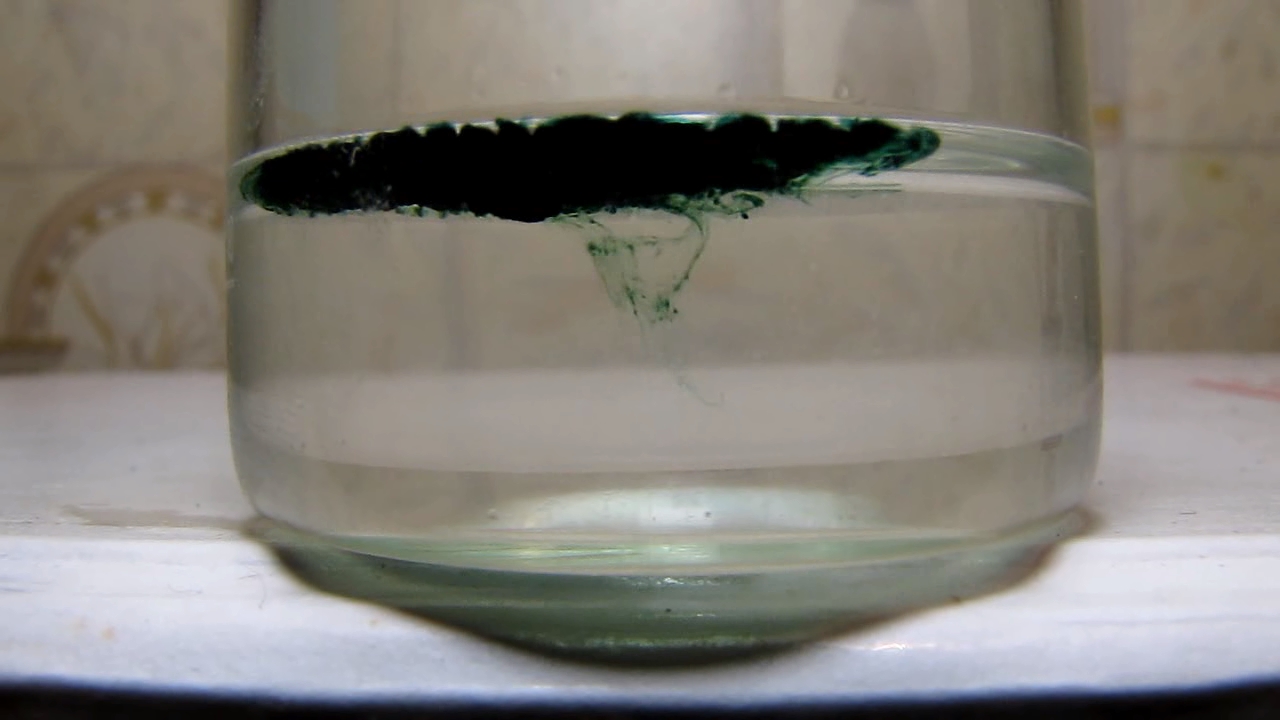
|
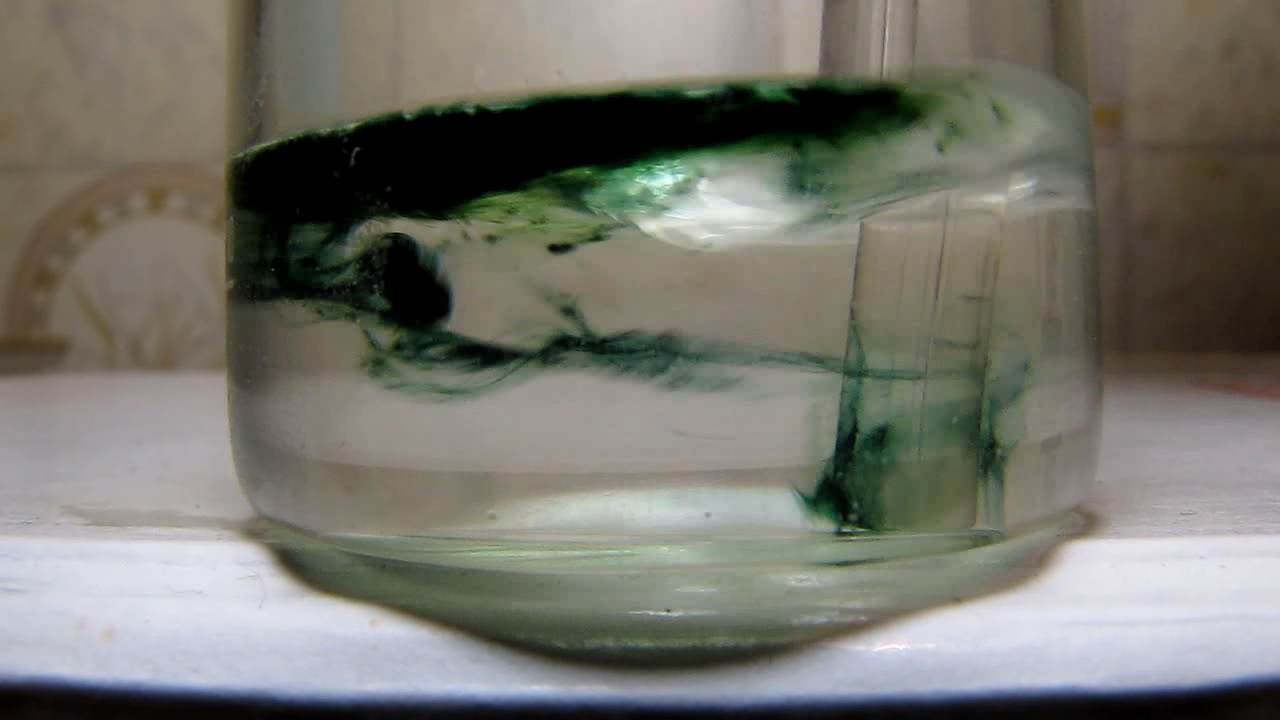
|

|

|
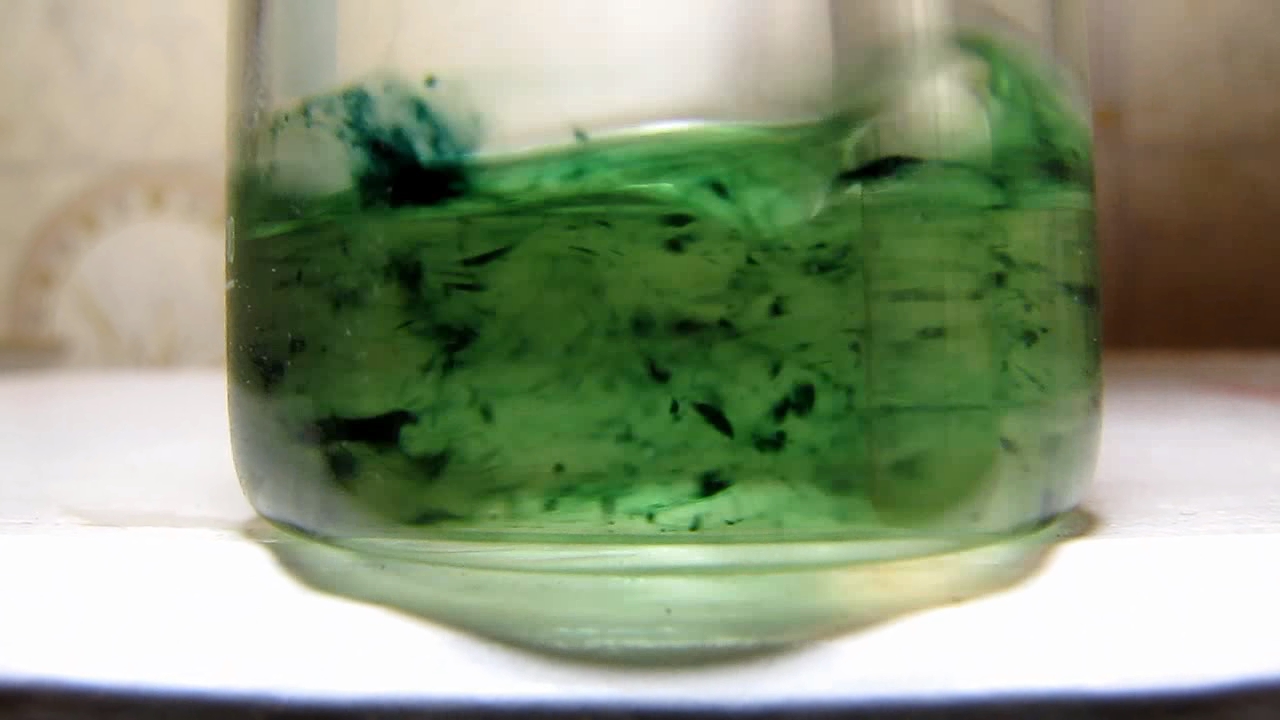
|

|
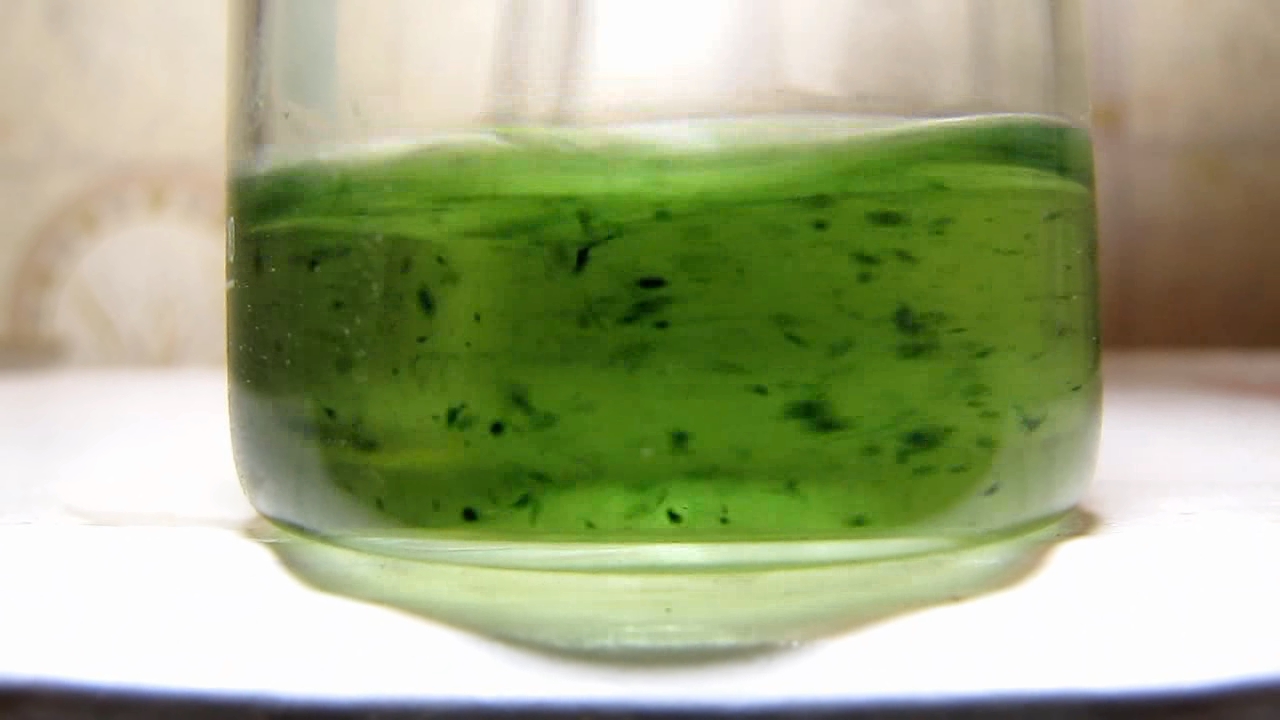
|

|
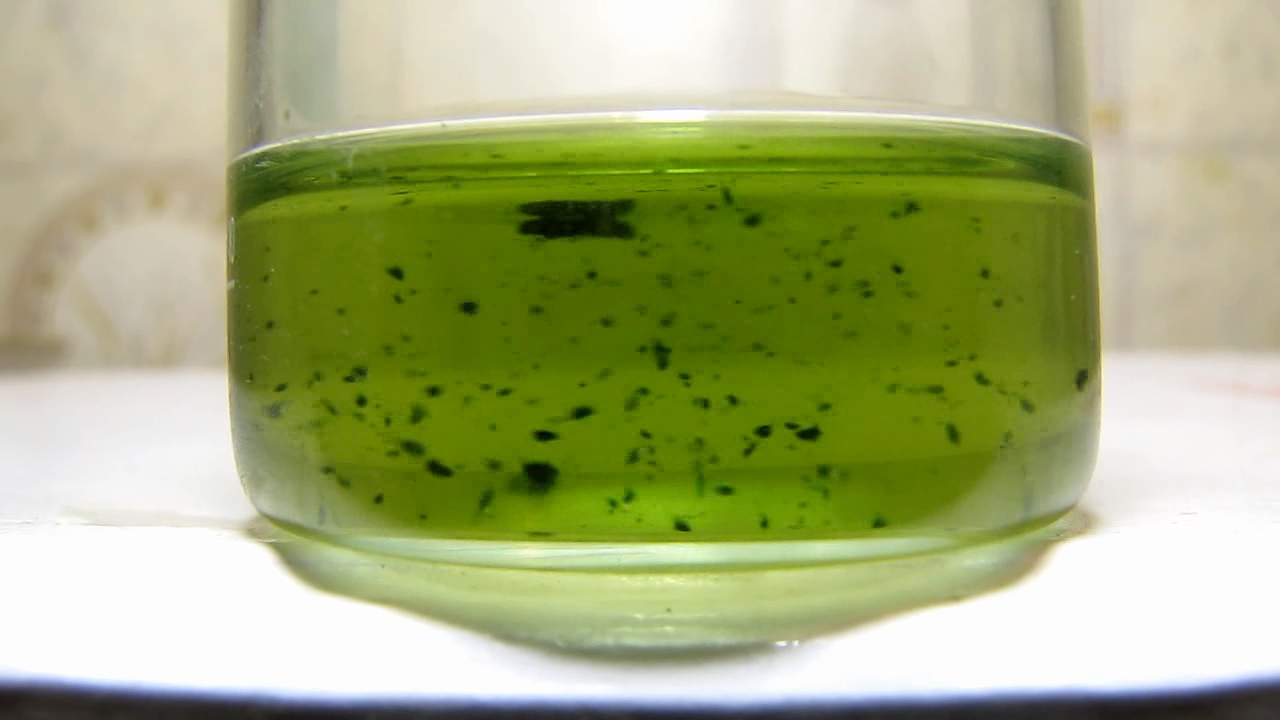
|

|
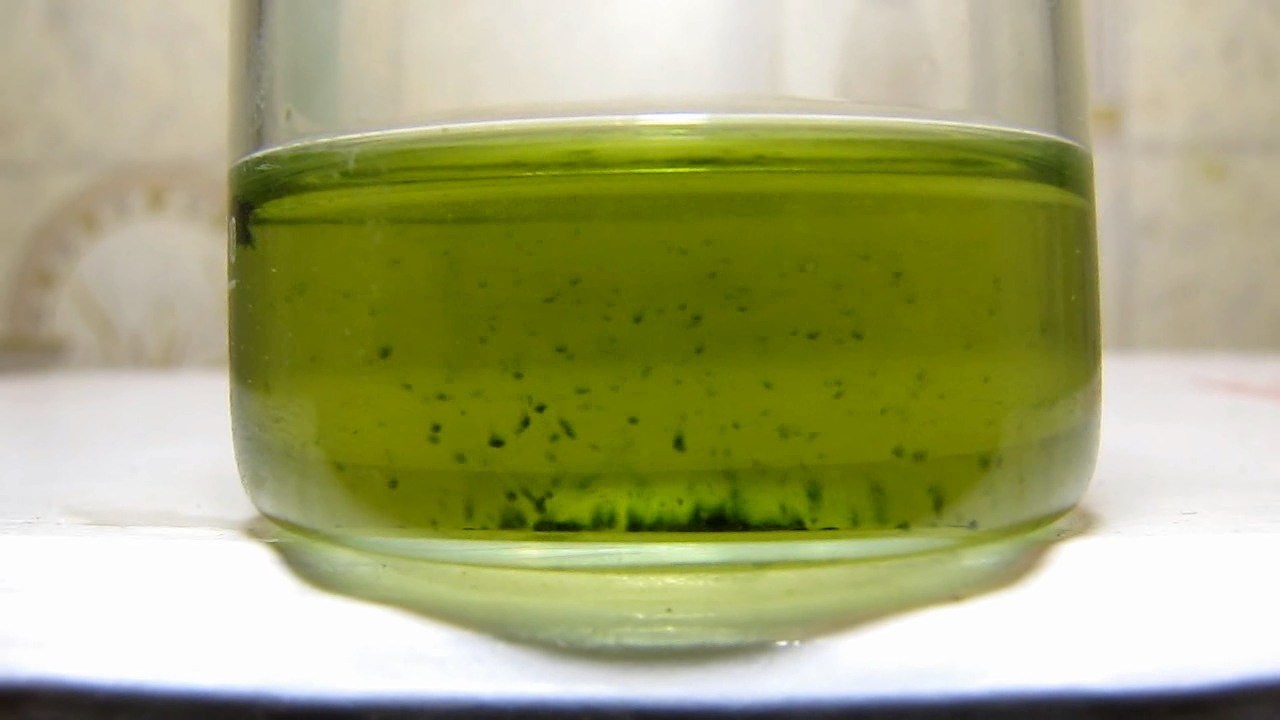
|
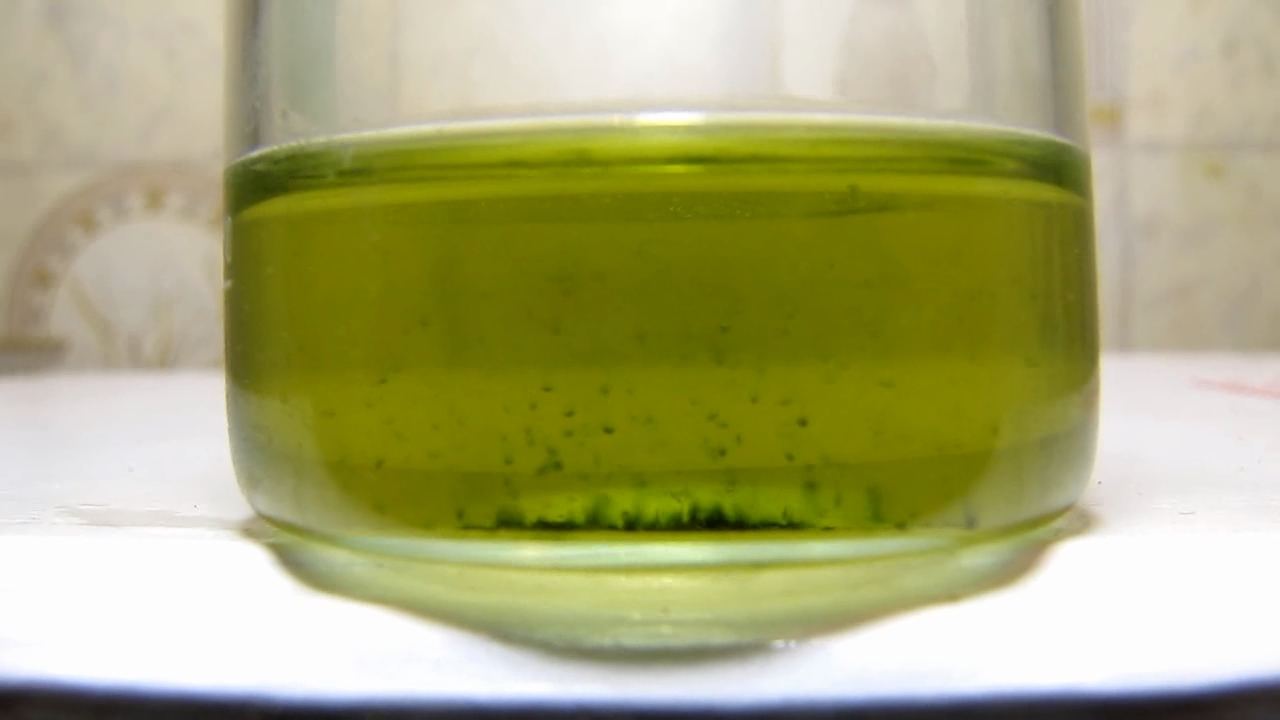
|
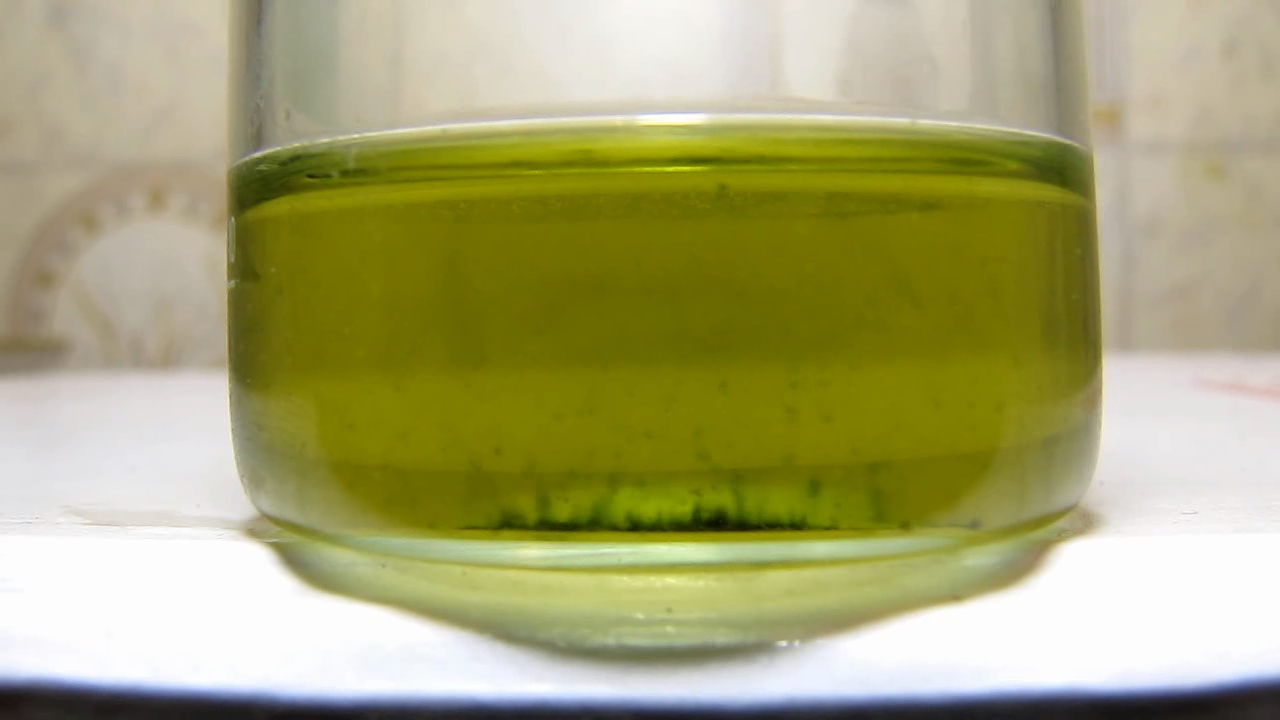
|
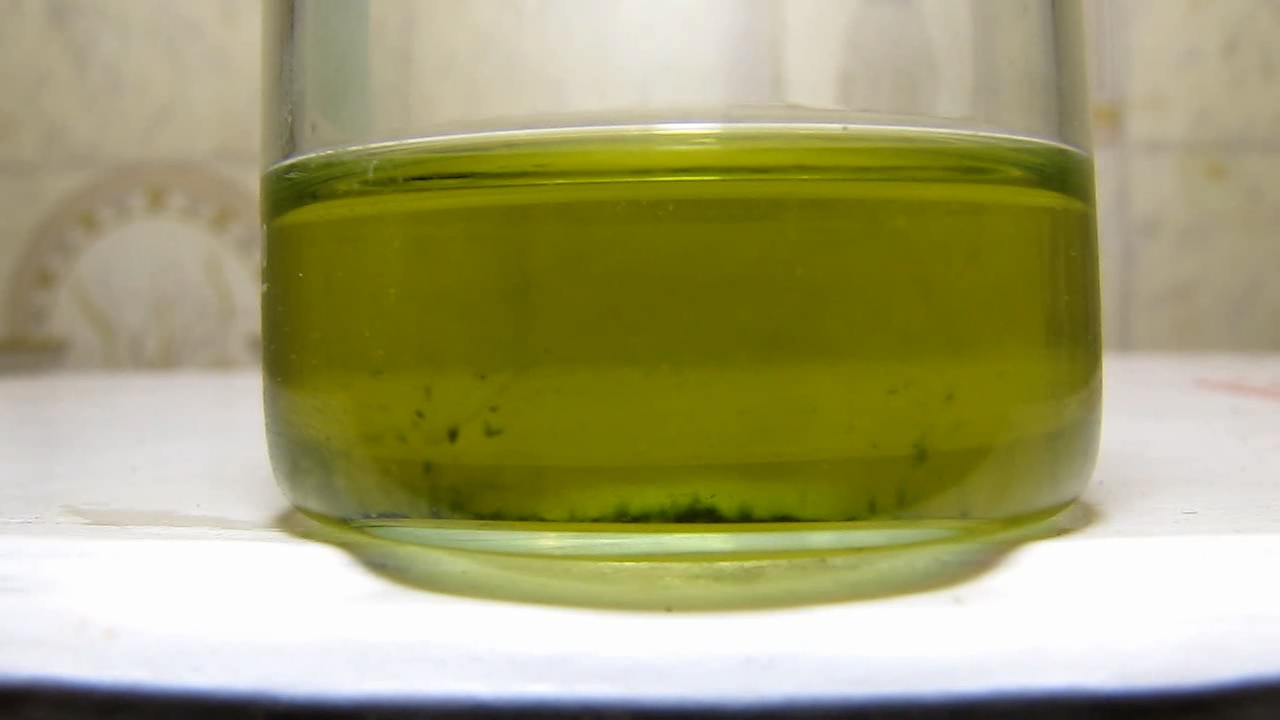
|
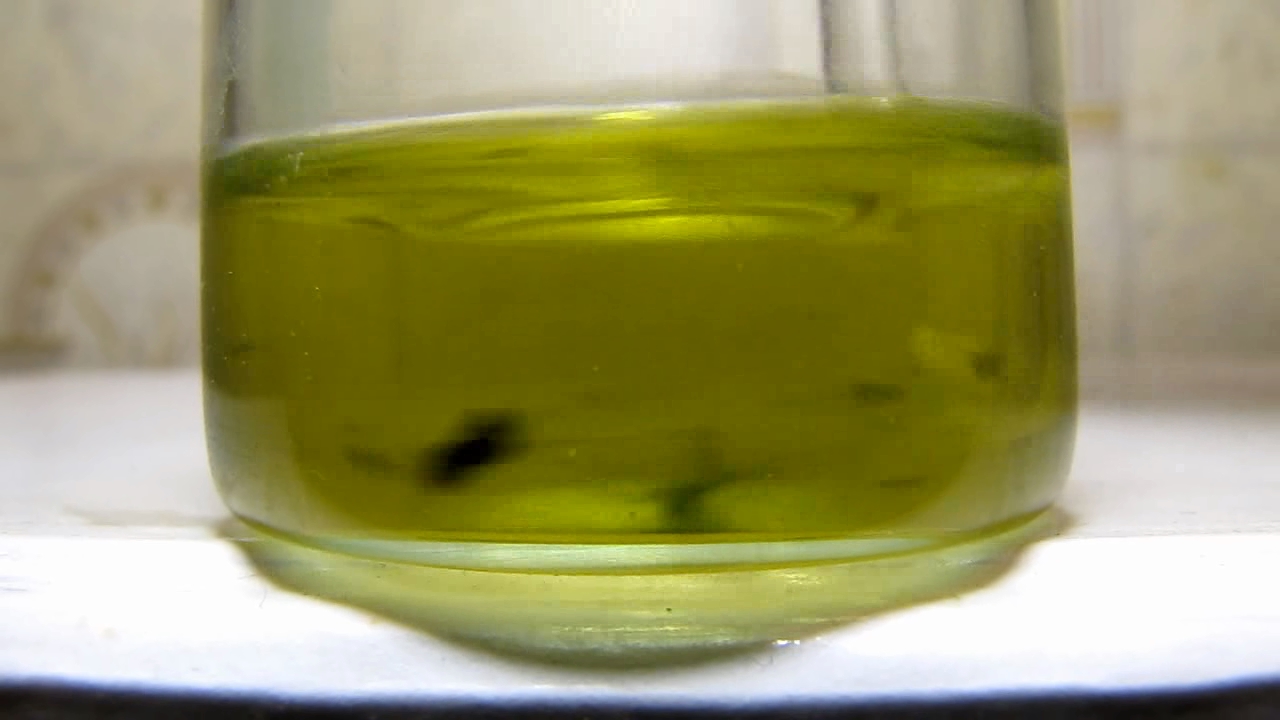
|
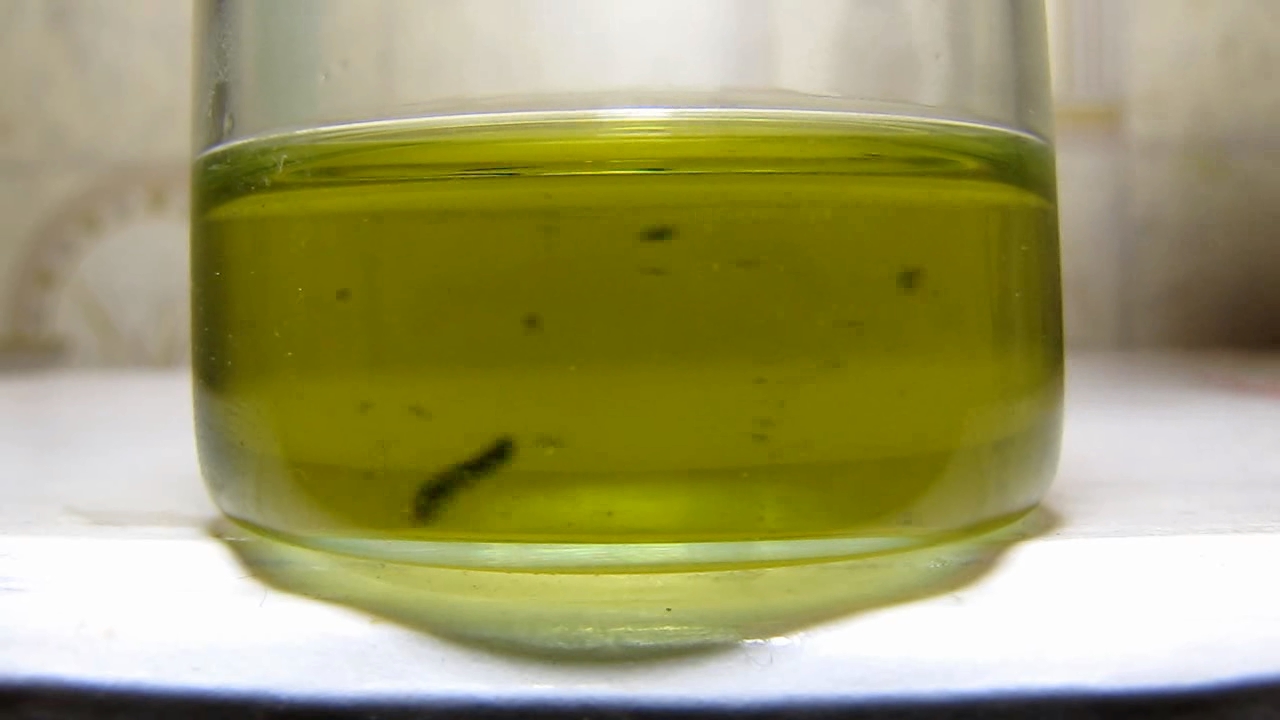
|

|
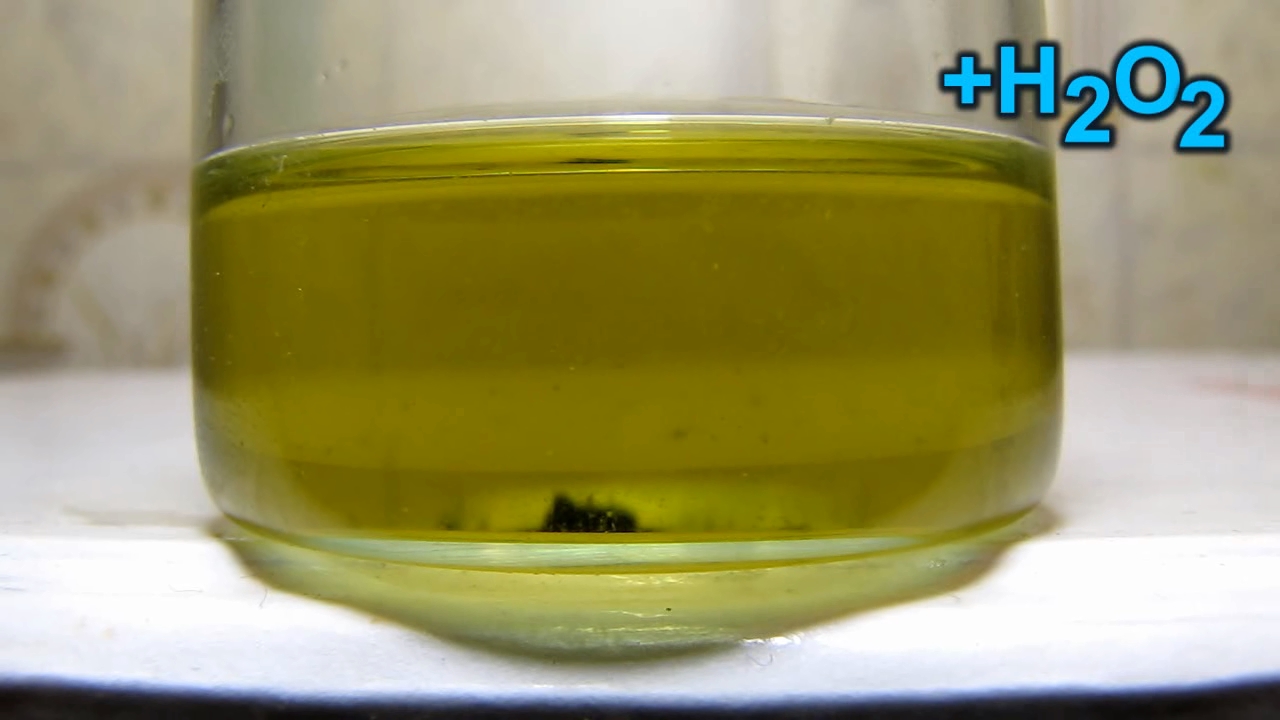
|

|
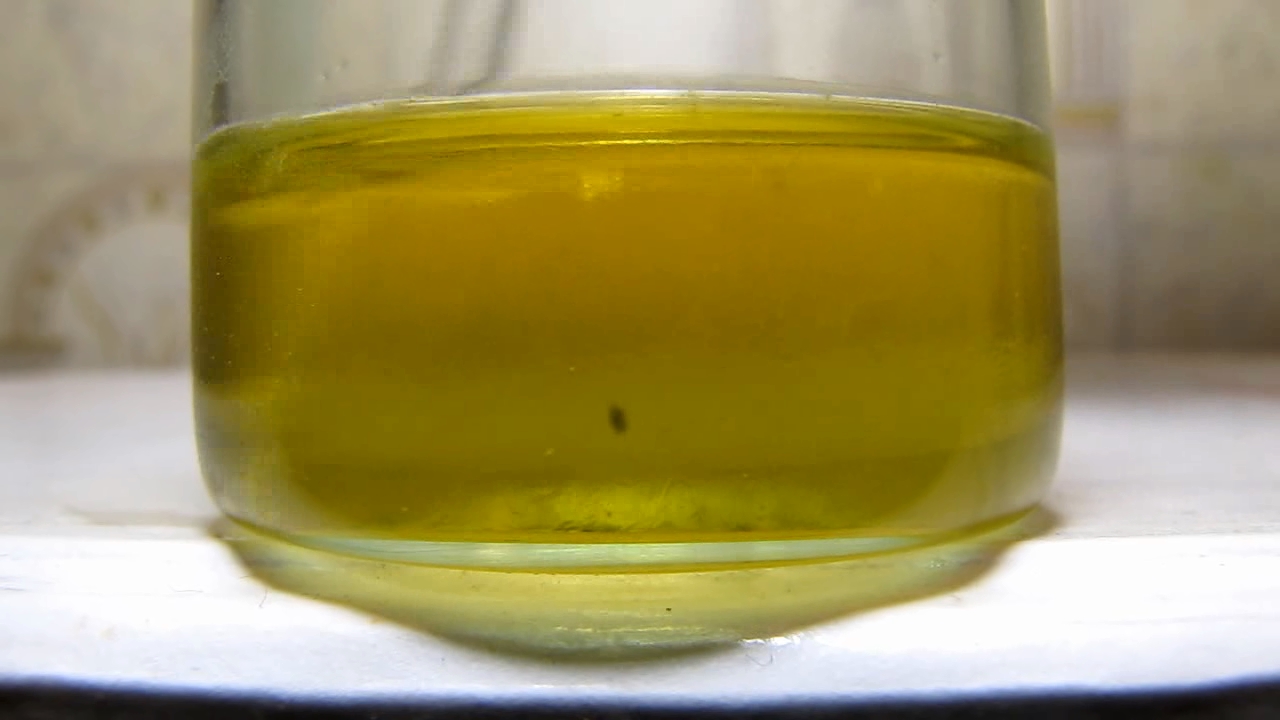
|
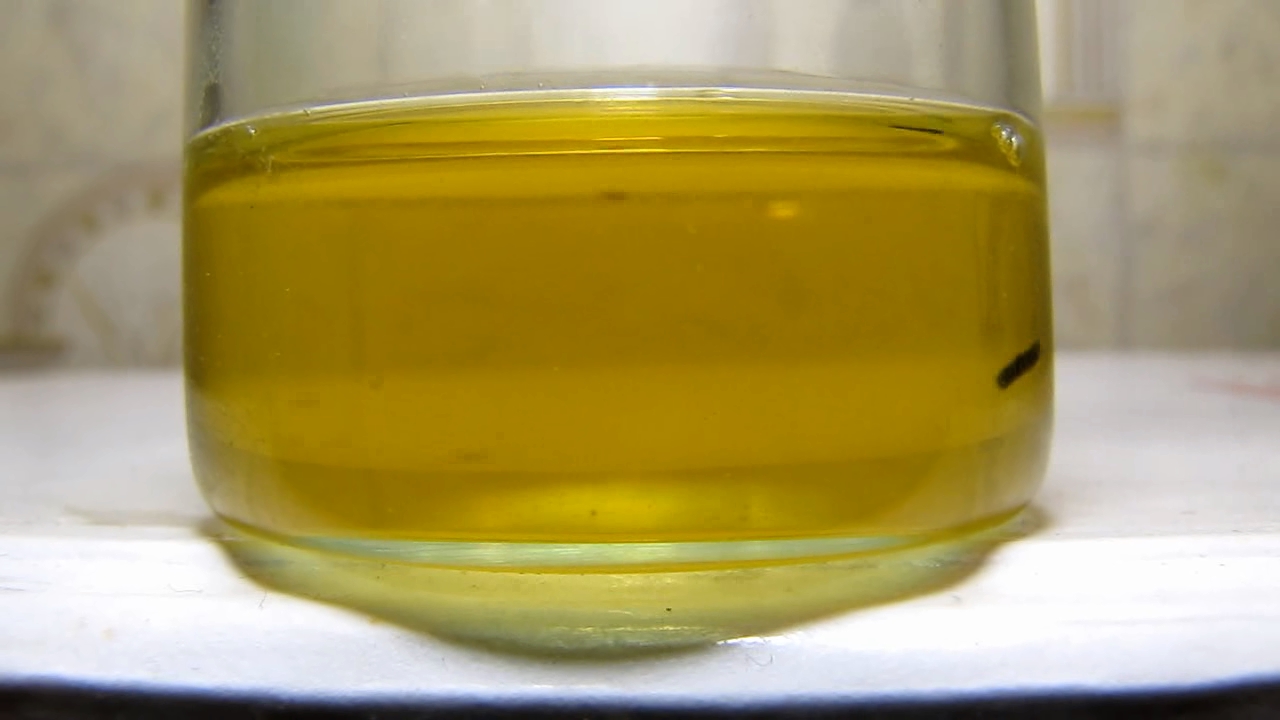
|

|